Percoidei
There are 78 families in this suborder, making it the largest suborder in all fishes. Let's get a move-on, shall we?
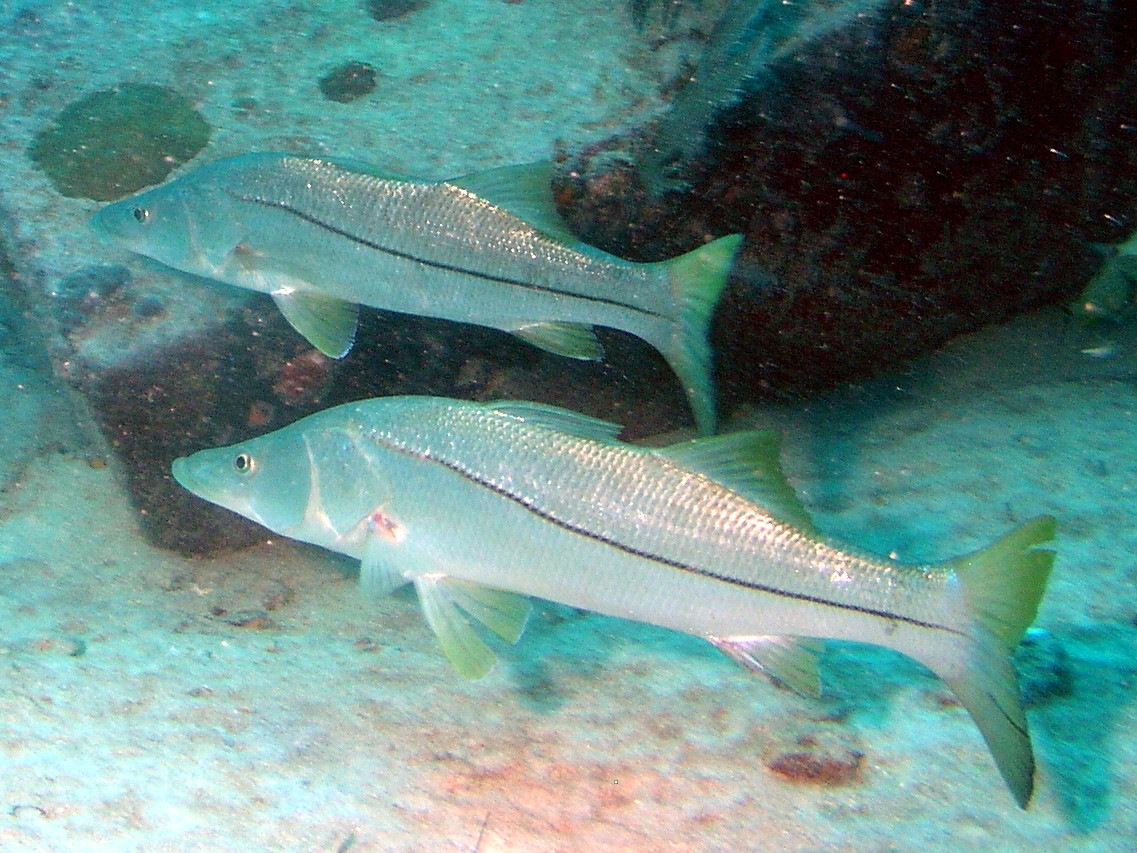
Centropomidae: Snooks
There is only one genus in this family, Centropomus. They are characterized by a protruding lower jaw, forked caudal tail, and concave forehead.

Ambassidae: Asiatic Glassfishes
This family gets its name because many of the species are transparent in appearance. The Indian Glassy Fish, Parambassis ranga, is used in the pet trade, and it has been known for sellers to inject fishes with dye to give them different color. Fortunately, the pet trade is cracking down on this and it has become much less prevalent.
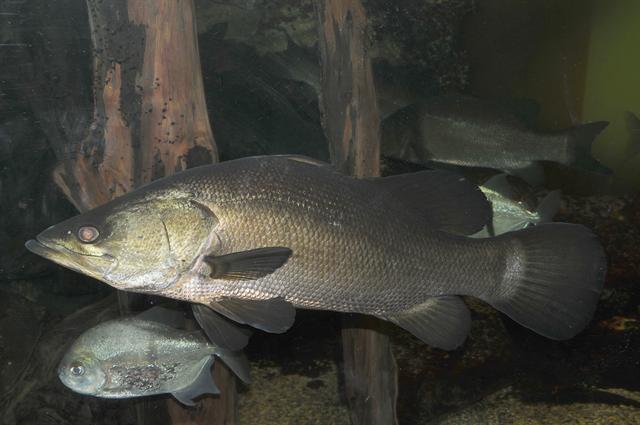
Latidae: Lates
These fellers aren't too exciting, but some members, such as the Barramundi, make delicious food fishes. In fact, the Nile Perch (Lates niloticus) was introduced into Lake Victoria as a food source, and as a consequence has destroyed many of the natural fish populations. Sad.
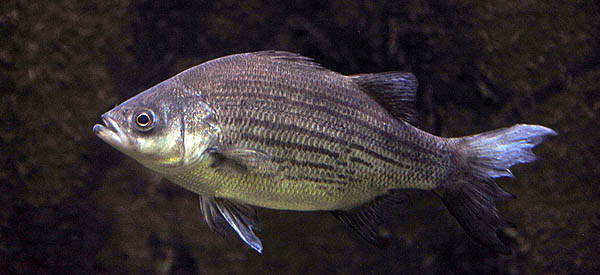
Moronidae: Temperate Basses
The fishes in this family are known for being good food and sport fishes, such as branzino (Dicentrarchus labrax). Members of the genus Morone are recognizable for the pattern of horizontal stripes running down their sides.

Perchichthyidae: Temperate Perches
This family is mainly found in Australia, but there are also members in Asia and South America. It includes the Murray Cod (Maccullochella peelii), which is one of the largest freshwater fish species in the world.
Perciliidae: Southern Basses
There is one genus, Percilia. This family is usually grouped with Perchichthyidae, but Nelson has honored them with their own family! There are only two species, which are both found in Chile (the country, not the meaty, bean-filled hearty soup).
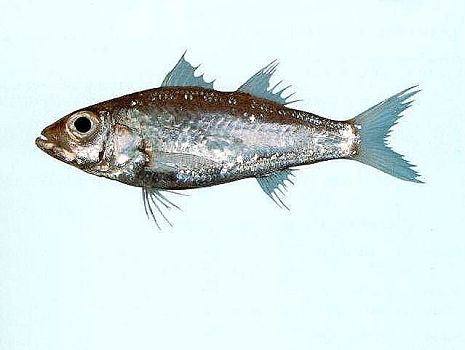
Acropomatidae: Lantern Bellies
This family gets its name from members of the genus Acropoma, which have light emitting organs on their bellies (light=lantern, get it!!!!). These few members of the family are notable for also having an anterior anus, which seems to mean it is located near the pelvic fin base, which is up near the throat...crazy.
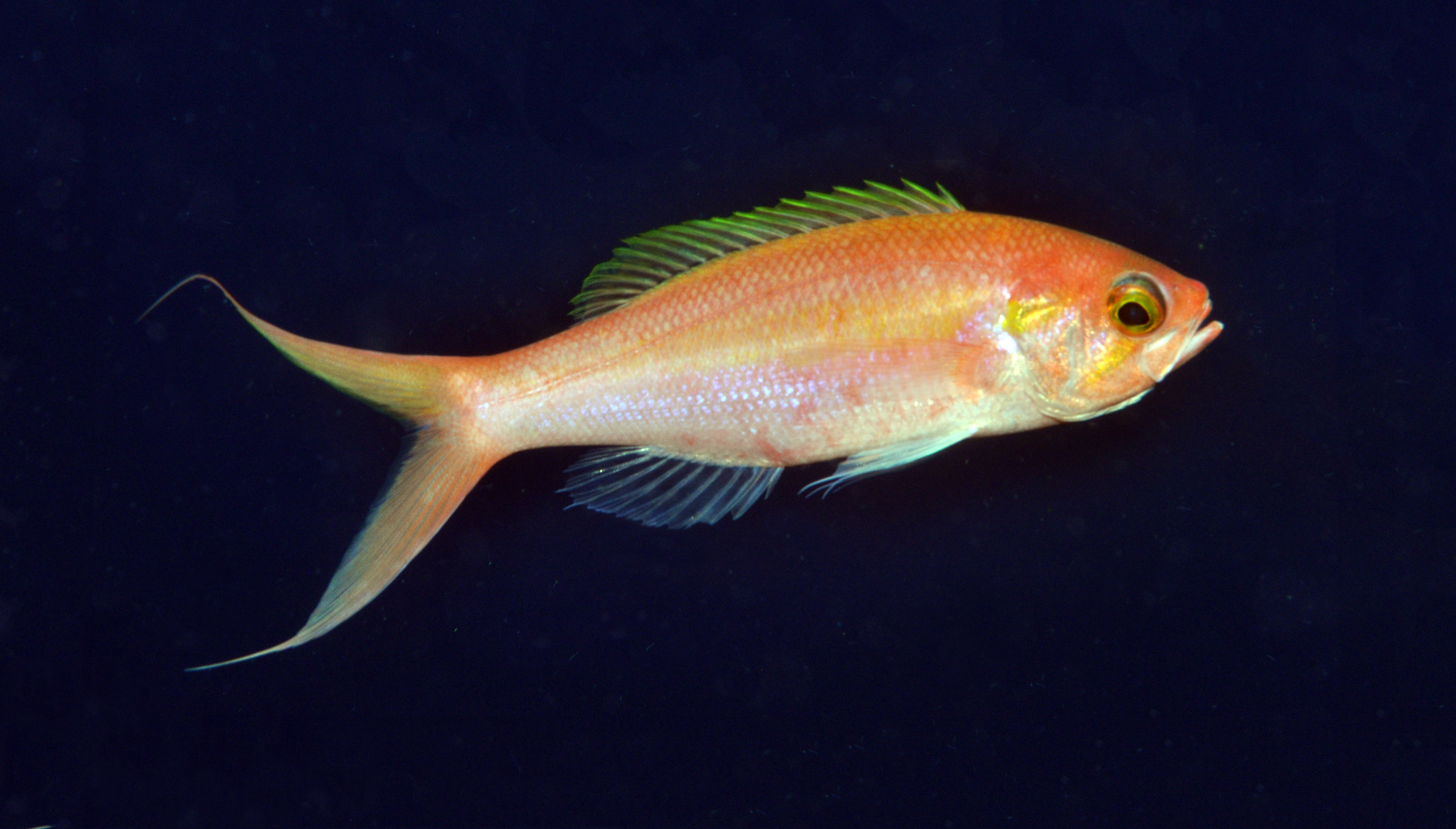
Symphysanodontidae: Slopefishes
There is only one genus, Symphysanodon. These fishes are recognizable by their elongated and deeply forked caudal fin, along with the presence of two opercular spines on each side.

Drow male / CC BY-SA (https://creativecommons.org/licenses/by-sa/4.0)
Polyprionidae: Wreckfishes
These l'il fellers get their name because they like to hang around shipwrecks (quite the popular resort destination for fishes). Their scientific name means "many saw," because of the spiky appearance of their dorsal fins.
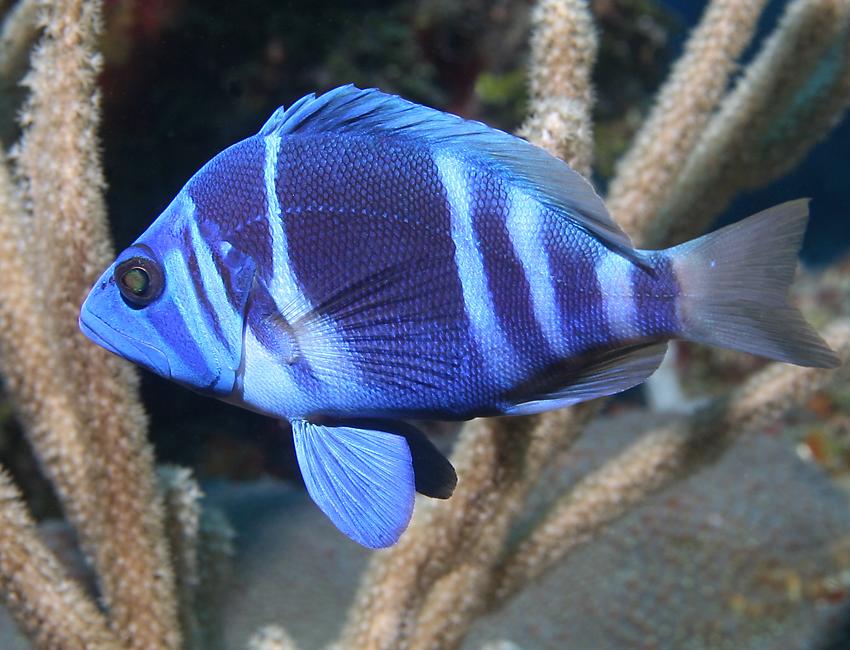
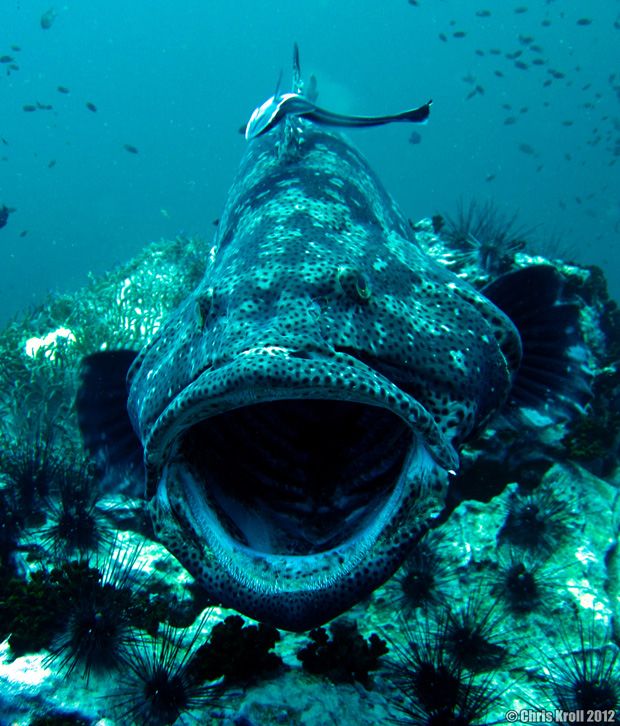

Izuzuki / CC BY-SA (https://creativecommons.org/licenses/by-sa/3.0)
Serranidae: Sea Basses
Now here's a familiar family to many people! This family contains over 400 species, including the groupers! They often have a bright or noticeable appearance, along with teeth that protrude from the lower jaw. Many species are hermaphroditic, and although born females, can become male if there are no males in the area! Let's look at some interesting members of this family:
- Giant Grouper (Epinephelus lanceolatus): The largest member of this family, it is found around reefs in Australia. It can reach over 2.5m and 400kg.
- Pacific Goliath Grouper (Epinephelus quinquefasciatus) and Atlantic Giant Grouper (Epinephelus itajara): Although not as large as the giant grouper, these two fishes are quite large and fearless, and will swim near divers on shipwrecks!
- Grammistinae: This subfamily is known as the soapfishes, for their production of a soapy toxic mucus containing a compound known as grammistin.
- Hamlets (Hypoplectrus): This genus contains small brightly-colored fishes that are both male and female, and they take turns being either gender during sex.
Centrogeniidae: False Scorpionfishes
There is only one species, Centrogenys vaigiensis. It looks similar to the scorpionfish in order to protect itself from predators, but it is not venomous itself. The difference is apparent when comparing the body shapes of the true and false scorpionfish.
Ostracoberycidae: Ostracoberycids
There is only one genus (Ostracoberyx). These fishes can be recognized by a long spine extending from the preopercular bone (part of the operculum, which covers the gills).
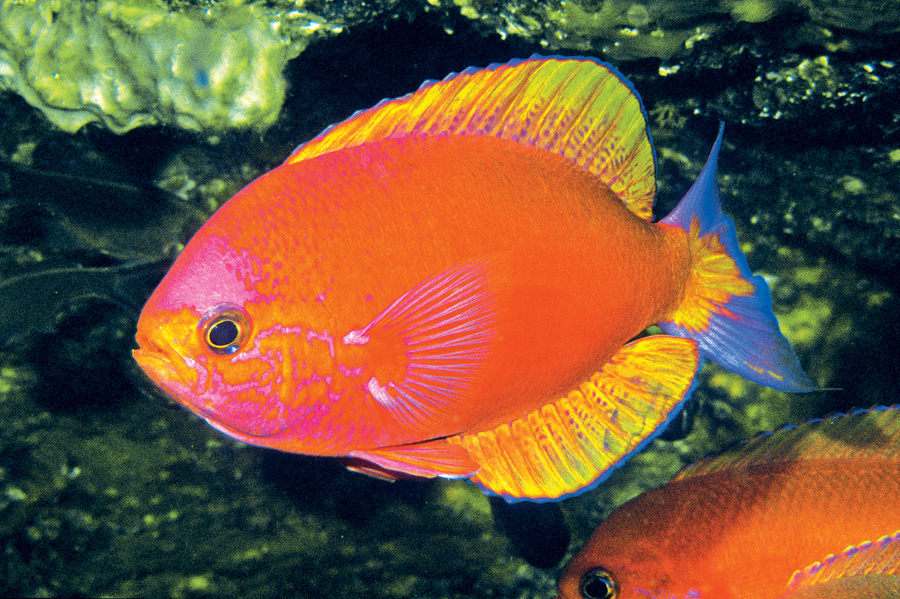
Callanthiidae: Groppos
These fishes have a FLAT nasal organ DEVOID of lamellae! That would be super exciting, if I knew exactly what it meant...they also have a lateral line which runs near the base of the dorsal fin, which is unusually high compared to other fishes.
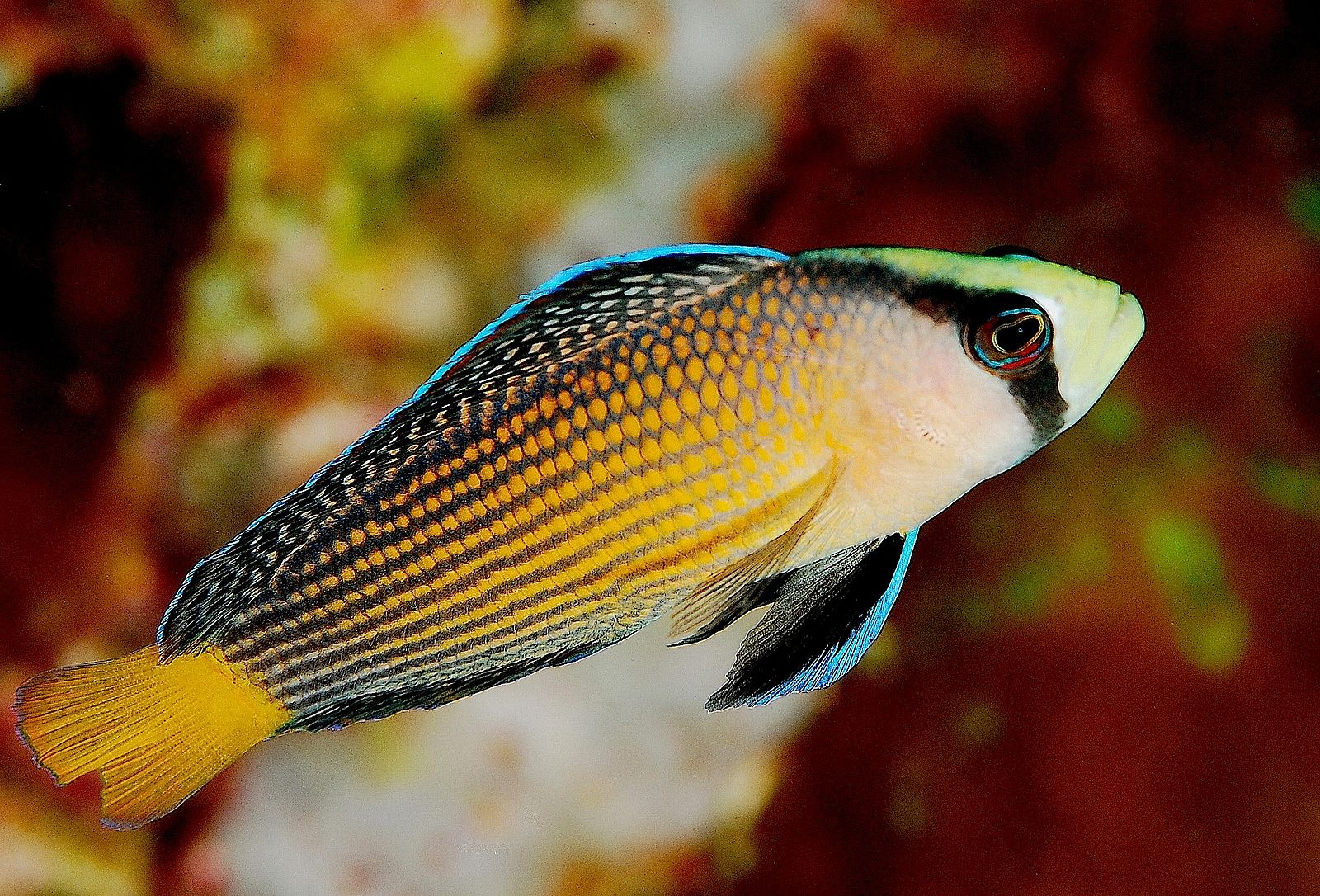
Jenny (JennyHuang) from Taipei / CC BY (https://creativecommons.org/licenses/by/2.0)
Pseudochromidae: Dottybacks
This family is full of colorful fish species, and can be discerned from other families by the presence of three or less dorsal fin spines.
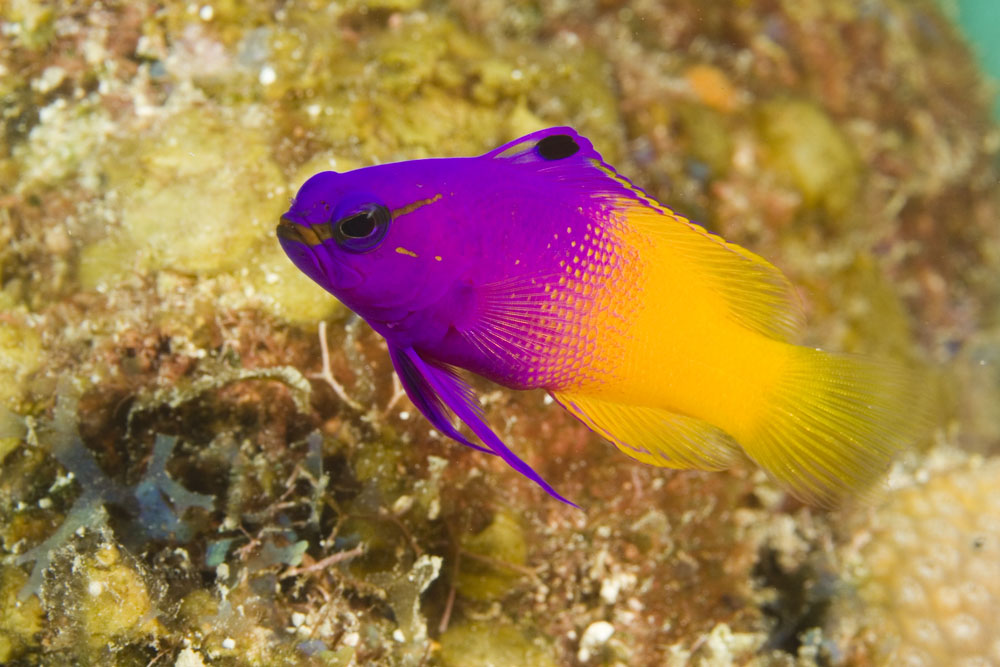
Grammatidae: Basslets
These cute guys are not to be confused with some members of Serranidae, who are occasionally called "fairy basslets." The fishes in this family have interrupted lateral lines, or lack the line entirely. They also have large pelvic fins containing one spine each.
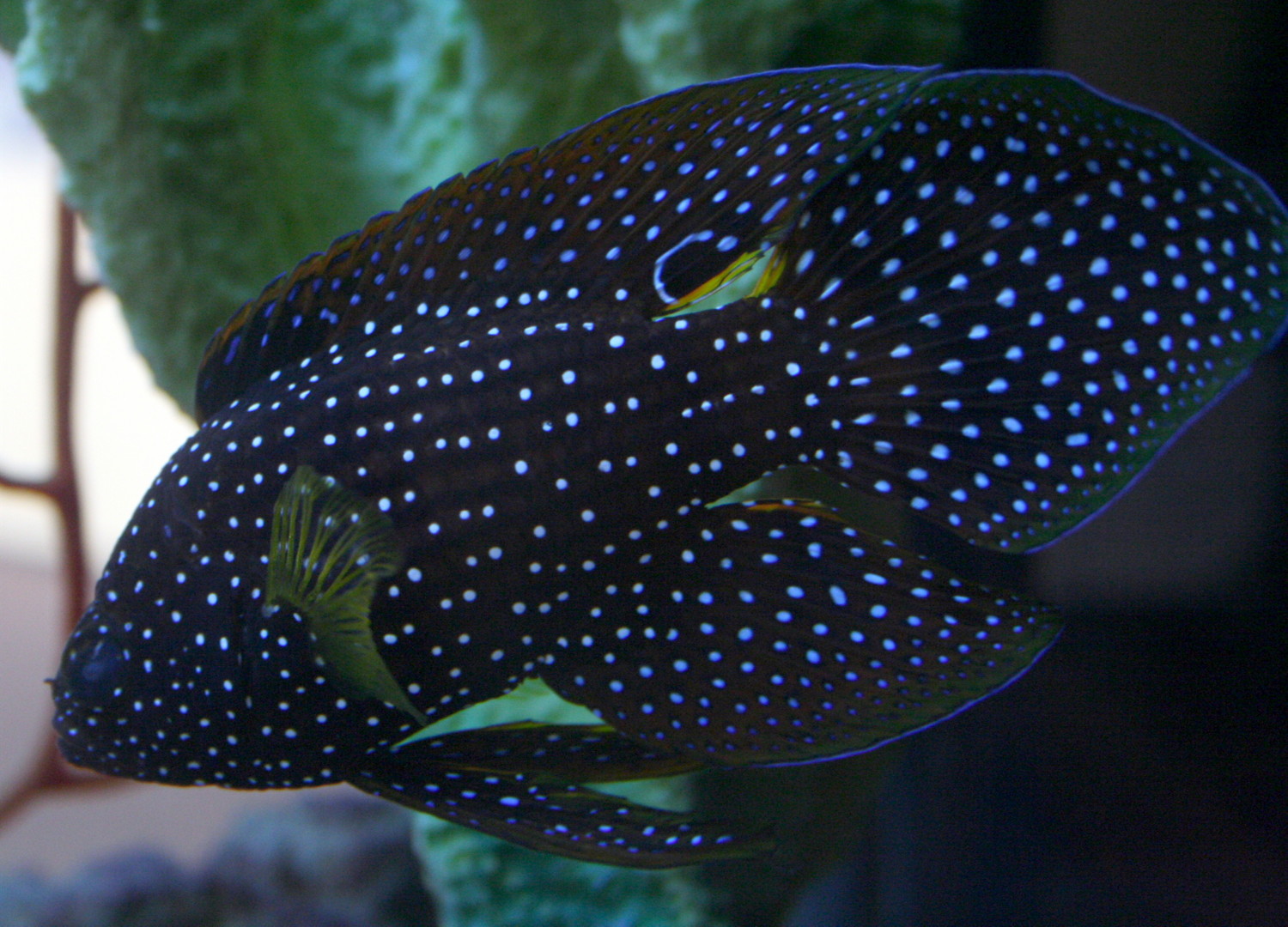
Plesiopidae: Roundheads
They have large eyes, large mouths, and round heads (hence the name). They also have elongated spines in the pelvic fins, similar to Grammatidae.
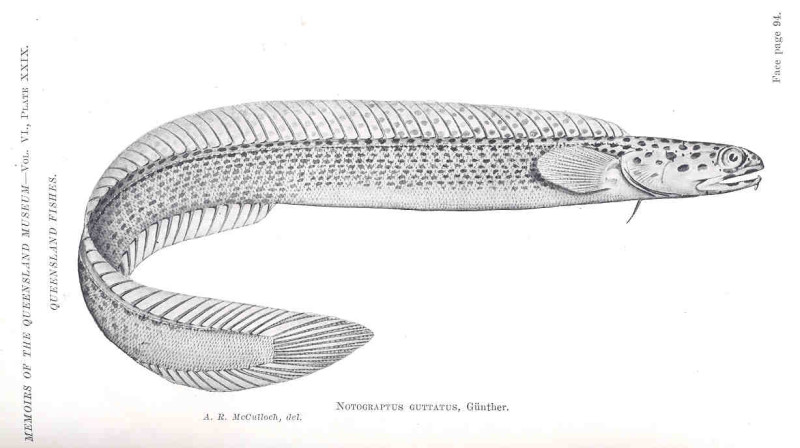
Notograptidae: Bearded Eelblennies
Is that an eel? No, it's a BEARDED EELBLENNY! They may look like eels, but they are not. This mistake is made because the dorsal, caudal, and anal fin are all connected. They are not eels, because they retain pectoral and pelvic fins. The "beard" is a barbel on the chin. There is only one genus (Notograptus) with two species.
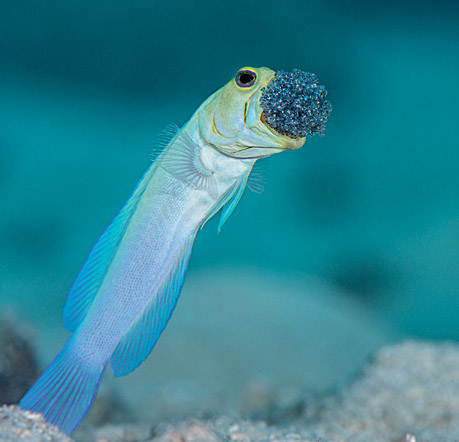
Opistognathidae: Jawfishes
These fishes have large heads, eyes, and mouths. They dig burrows by filling their mouths with sand, then spitting it out elsewhere. They are mouth-brooders, with the males incubating the eggs. I guess they deserve the name "jawfishes."
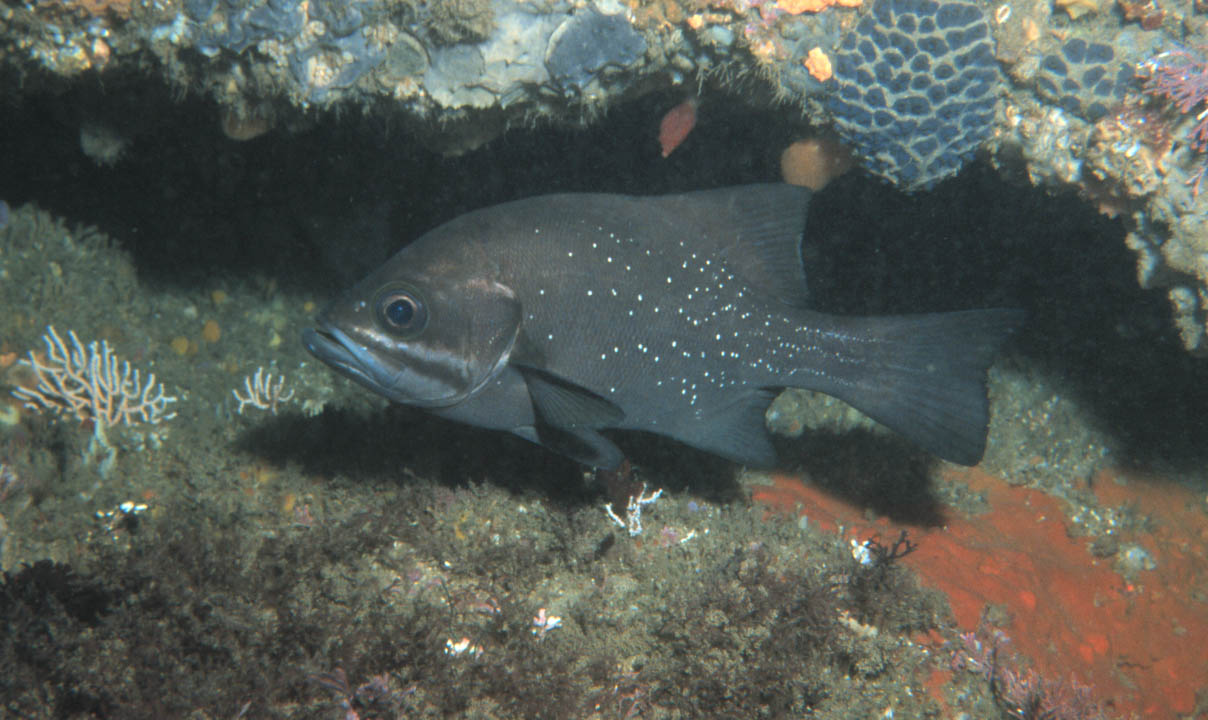
Dinopercidae: Cavebasses
There's not much I can say about this family. There are two species, each in their own genus (Centrarchops and Dinoperca). There is a depression in the dorsal fin between the spiny and soft regions. That's about it. I'm guessing, based on the name, that they like to chillax in caves. But I could be wrong, scientists do like to be tricky.

Banjosidae: Banjofish
There is only one species, Banjos banjos. It is interesting in that it has anal fins spines, with the 2nd spine being much longer than the others. It also has large, rounded pelvic fins.

Cephas / CC BY-SA (https://creativecommons.org/licenses/by-sa/3.0)
Centrarchidae: Sunfishes
If you've ever gone fishing in New York or other parts of the U.S., you'll recognize this freshwater family. The sunfishes populate many areas of North America, and some species make great sports fishes. Besides some osteological characters, the males are noted for making depressions in the bottom with their tails, which they use to protect their eggs. One of the worst fish names goes to genus Pomoxis, better known as "crappies."" On the other side, the adorable fish Lepomis gibbosus goes by the name of "pumpkinseed." Awwwwww.
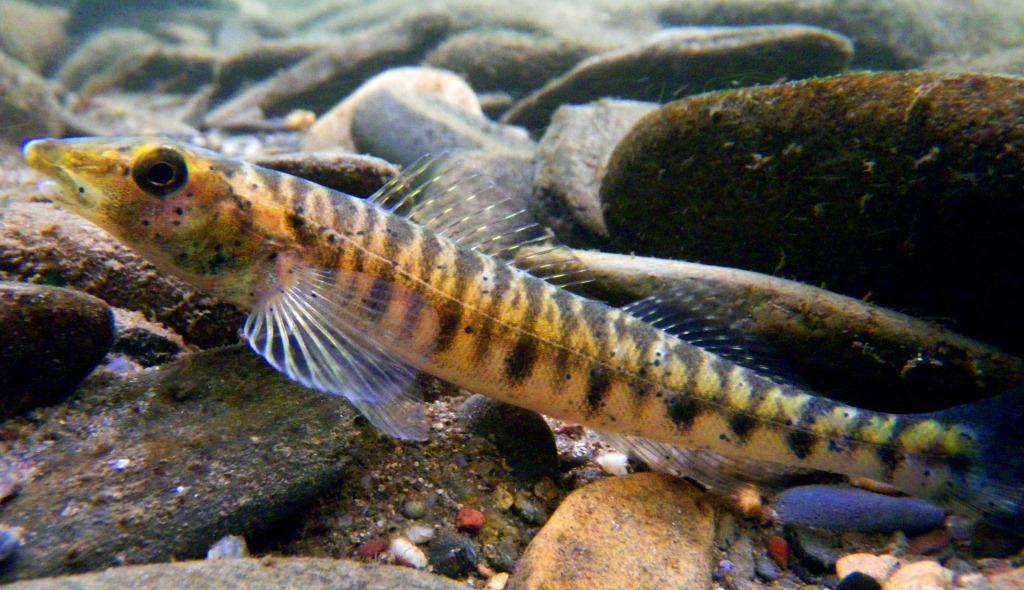
Percidae: Perches
One of the largest families, this is also a familiar freshwater fish group. These fishes are usually elongated in shape, and often lack a swimbladder due to a bottom-dwelling lifestyle. This family includes the darters, which are small benthic fishes making up at least two genera (Etheostoma and Percina). There are loads of these fishes, but they're differentiated based on small characteristics or location.
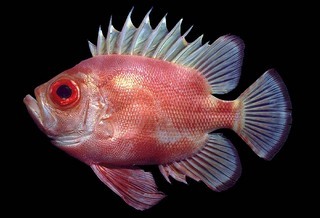
Priacanthidae: Bigeyes
These fish have (YOU GUESSED IT) big eyes. This is because they are nocturnal, and must see in the dark to hunt their prey. They are usually dark red or black.
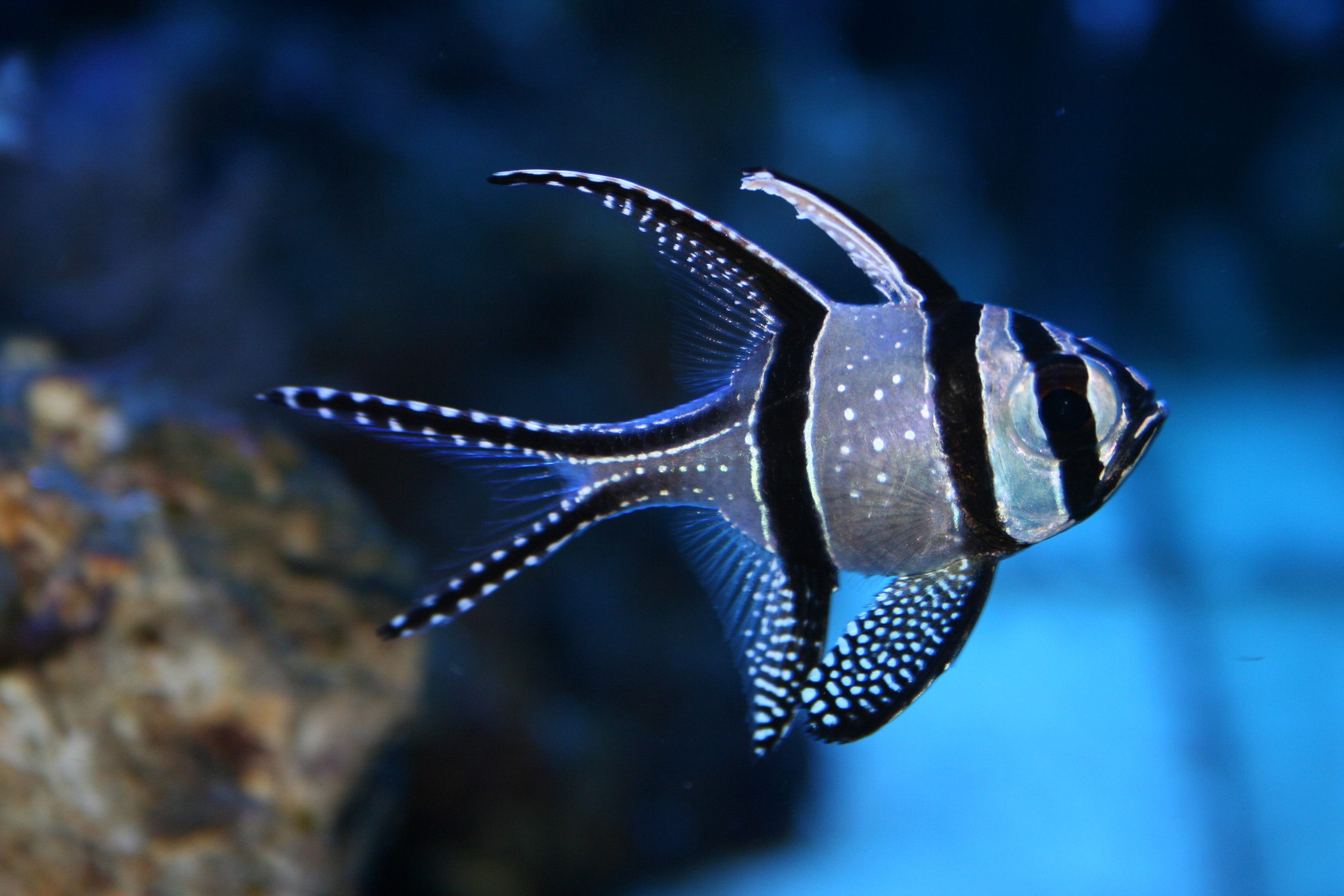
Apogonidae: Cardinalfishes
This family also has big eyes, but not as big as Priacanthids. They have a big mouth, and their dorsal fin is completely separated into spiny and soft regions. They are often colorful, and frequently found on reefs.
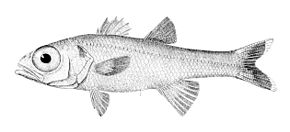
Epigonidae: Deepwater Cardinalfishes
These fishes are pretty similar to Apogonidae, but they live in DEEP WATER! So there.
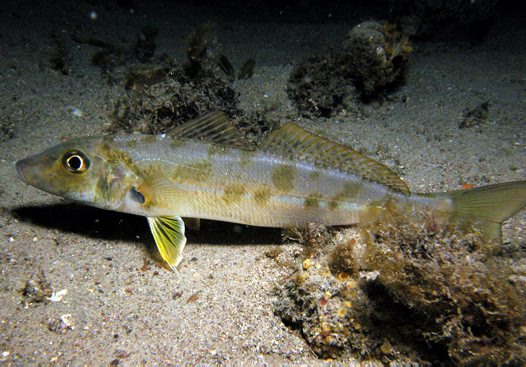
Sillaginidae: Sillagos
This family is made of long, skinny fishes with small terminal mouths that are prominent food fishes in the Indo-Pacific. Some species lack a swimbladder, while others have complex bladders with ducts near the anus.
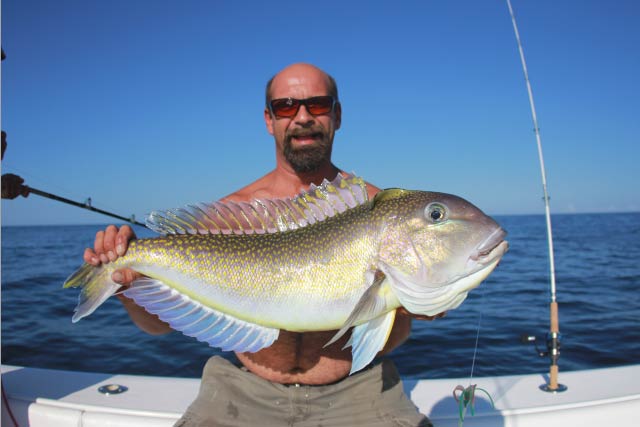
Malacanthidae: Tilefishes
These elongated fishes have elongated dorsal and anal fins which stretch most of the length of their bodies. The family gets its scientific name (meaning "many-thorns") from the larvae, which are covered in thorns and spines.
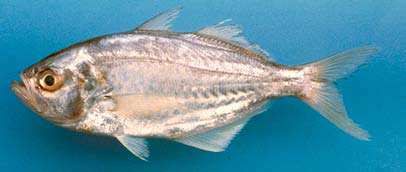
Lactariidae: False Trevally
There is only one species, Lactarius lactarius. It has a similar body shape and coloration to other powerful swimmers, like tuna or jacks. This fish is not to be mistaken for a (true) Trevally, which is a species of jack.

Peter Southwood / CC BY-SA (https://creativecommons.org/licenses/by-sa/3.0)
Dinolestidae: Long-Finned Pike
There is only one species, Dinolestes lewini. Although it has a similar body shape to barracudas (with a protruding lower jaw) it has a thicker body, with yellow colorations. It also has a longer dorsal and anal fin than the barracuda.
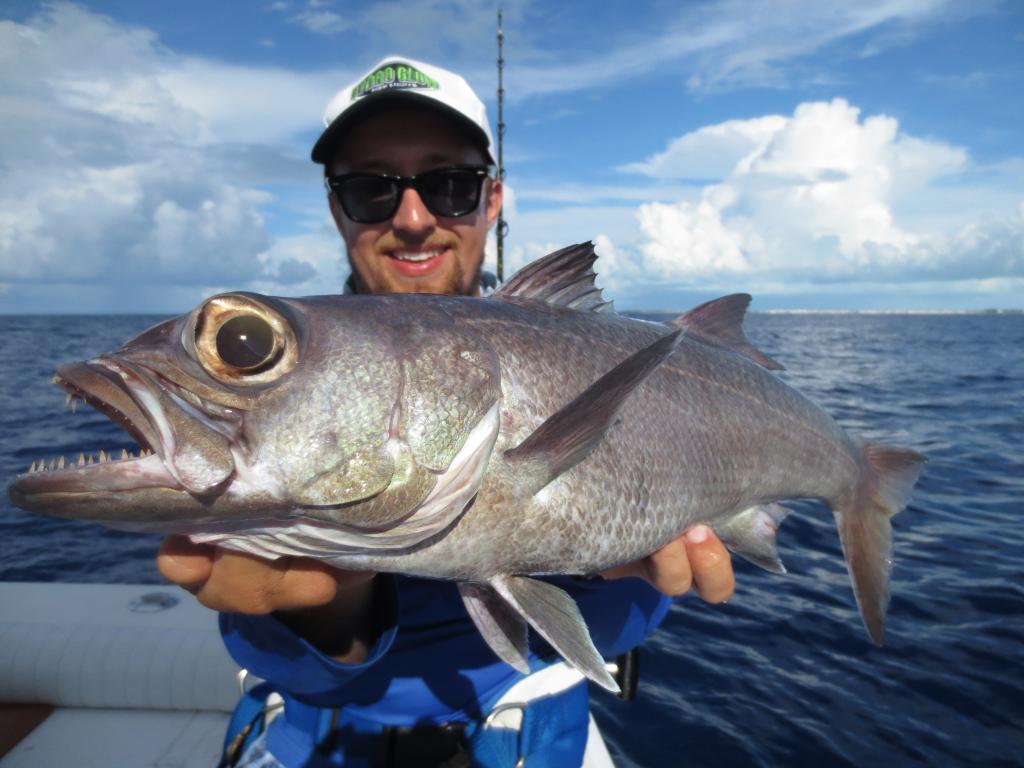
Scombropidae: Gnomefishes
What kind of lawn ornament will you find underwater? A GNOMEFISH! I'm so witty! There's only one genus, Scombrops, with three species. They have disproportionately large eyes.

SEFSC Pascagoula Laboratory; Collection of Brandi Noble, NOAA/NMFS/SEFSC. / Public domain
Pomatomidae: Bluefishes
There is only one species, Pomatomus saltatrix, and boy is he one crazy dude! The bluefish is a voracious predator, and will bite at anything with its prominent, extremely sharp teeth. When a school of them attacks a school of fish they can cause the water to violently churn, which is known as the "bluefish blitz." This fish has a long, tubular shape with a rounded head.
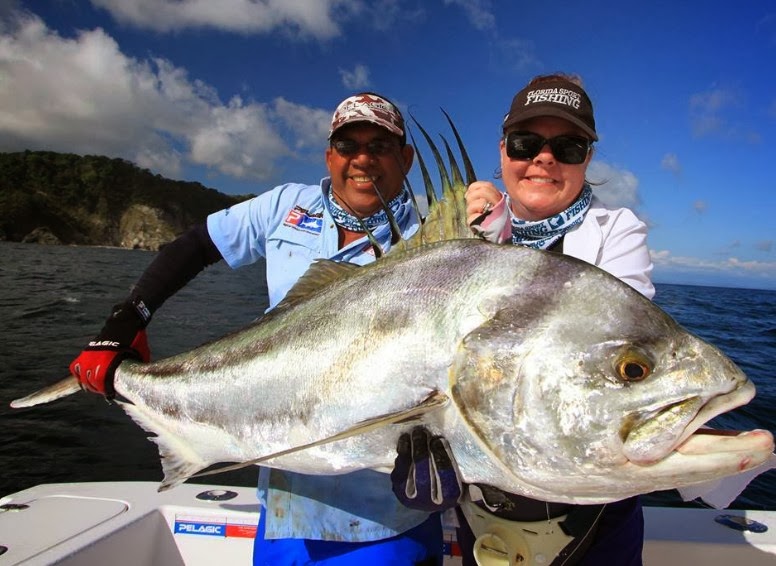
Nematistiidae: Roosterfishes
There is only one species, Nematistius pectoralis. It gets its name from its elaborate dorsal fin, which looks like a rooster's comb. The roosterfish is also interesting because its swimbladder passes through canals in the skull to connect to the inner ear in order to amplify sounds.
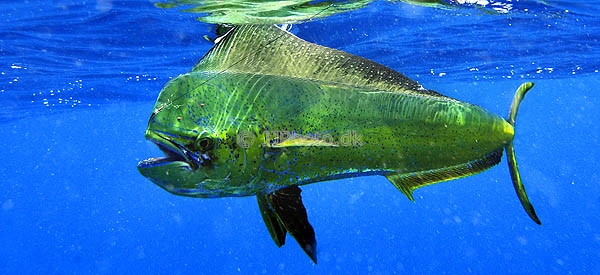

Coryphaenidae: Dolphinfishes
This is one of my favorite families! There is one genus, Coryphaena, with two species. The dorsal fin stretches the length of the body, starting at the head, and has no spines. Males have an extremely vertical sloping forehead. I thought they looked cool on the outside, but they're even cooler on the inside. The male's forehead slopes the way it does because as he matures, he GROWS A HORN! Check out the picture of a dolphinfish skull if you don't believe me! This family is not to be confused with dolphins.
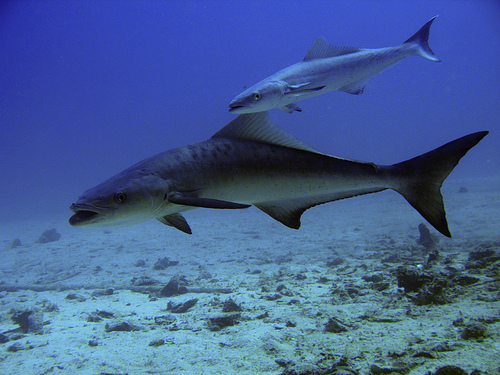
Rachycentridae: Cobias
There is only one species, Rachycentron canadum. This fish has an elongate body with a tapering head. Its dorsal fin is soft, although it has a few separate spines in front of the fin. The lower jaw slightly protrudes, and the cobia almost looks like a larger version of the remora, indicative of their close relationship (see next entry).
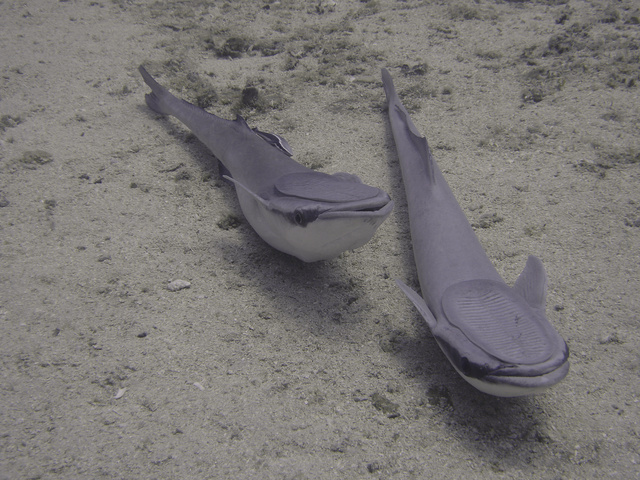
Echeneidae: Remoras
Another one of my favorite families! The remoras are super adorable, and have big lips with a protruding lower jaw. Their flattened head is home to their highly modified dorsal fin, which over millions of years of evolution has come to function as a suction cup! The remora will swim up to a larger fish or other animal and form a vacuum with its fin, allowing it to go for a free ride! The remora often pays back its host by nibbling on any parasites that may be present. It has been reported that people use remoras for turtle fishing. The fisherman ties a line to a remora, throws it in the water when a turtle is near, then reels the remora back in once it has attached to the turtle! For a super adorable video of a remora nibbling on a diver's hair, click HERE.
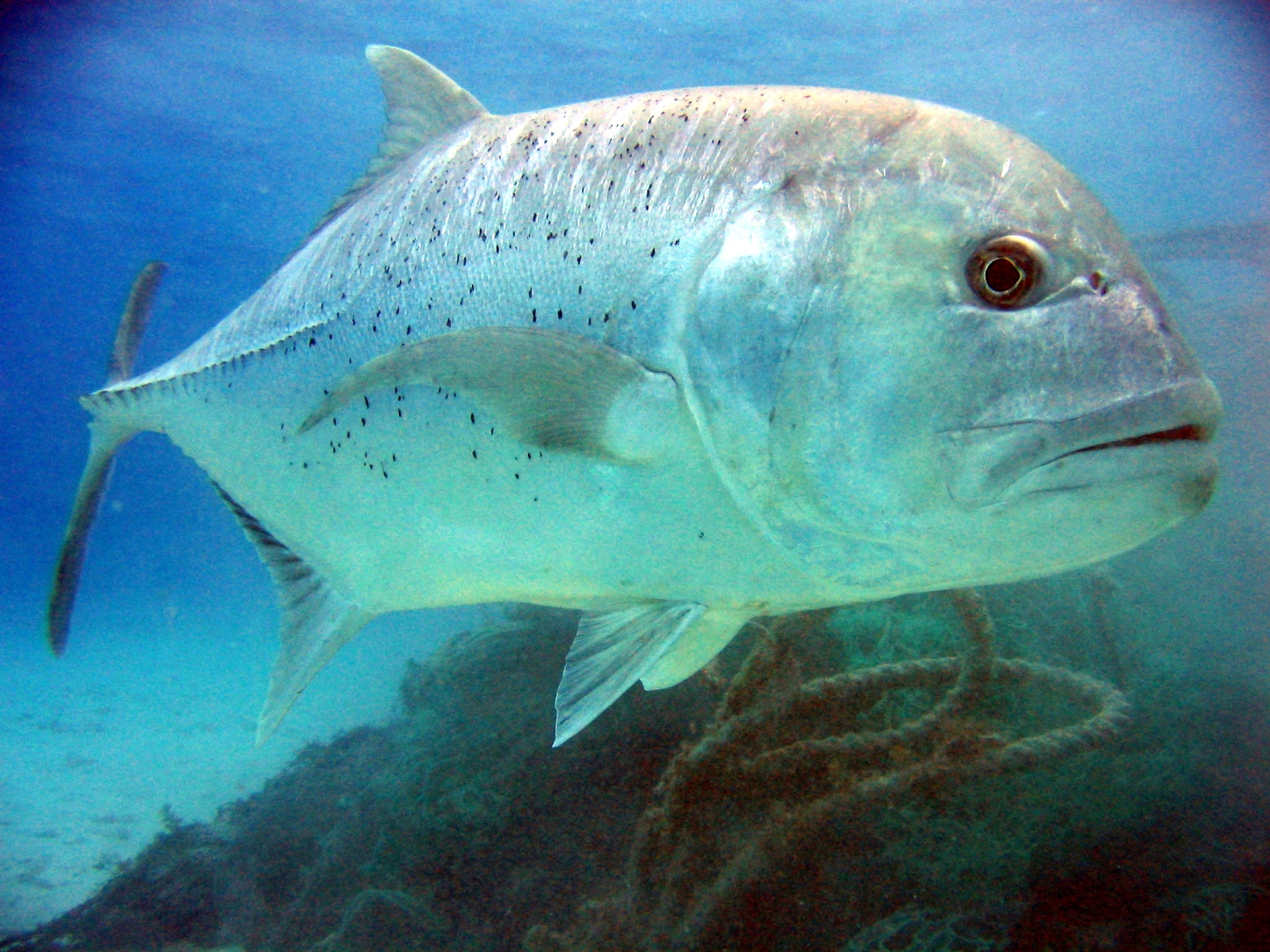
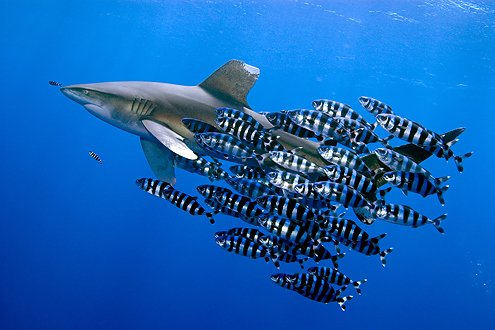
Carangidae: Jacks, Pompanos
This is a large family, with a very distinctive body type. Jacks can be identified by a laterally flattened body, which can be rounded or fusiform. The body tapers towards the tail, which is stiff and provides the swimming power of the fish. One notable member is the pilotfish, Naucrates ductor, which is known to swim with sharks and other large animals, eating parasites and excess food.
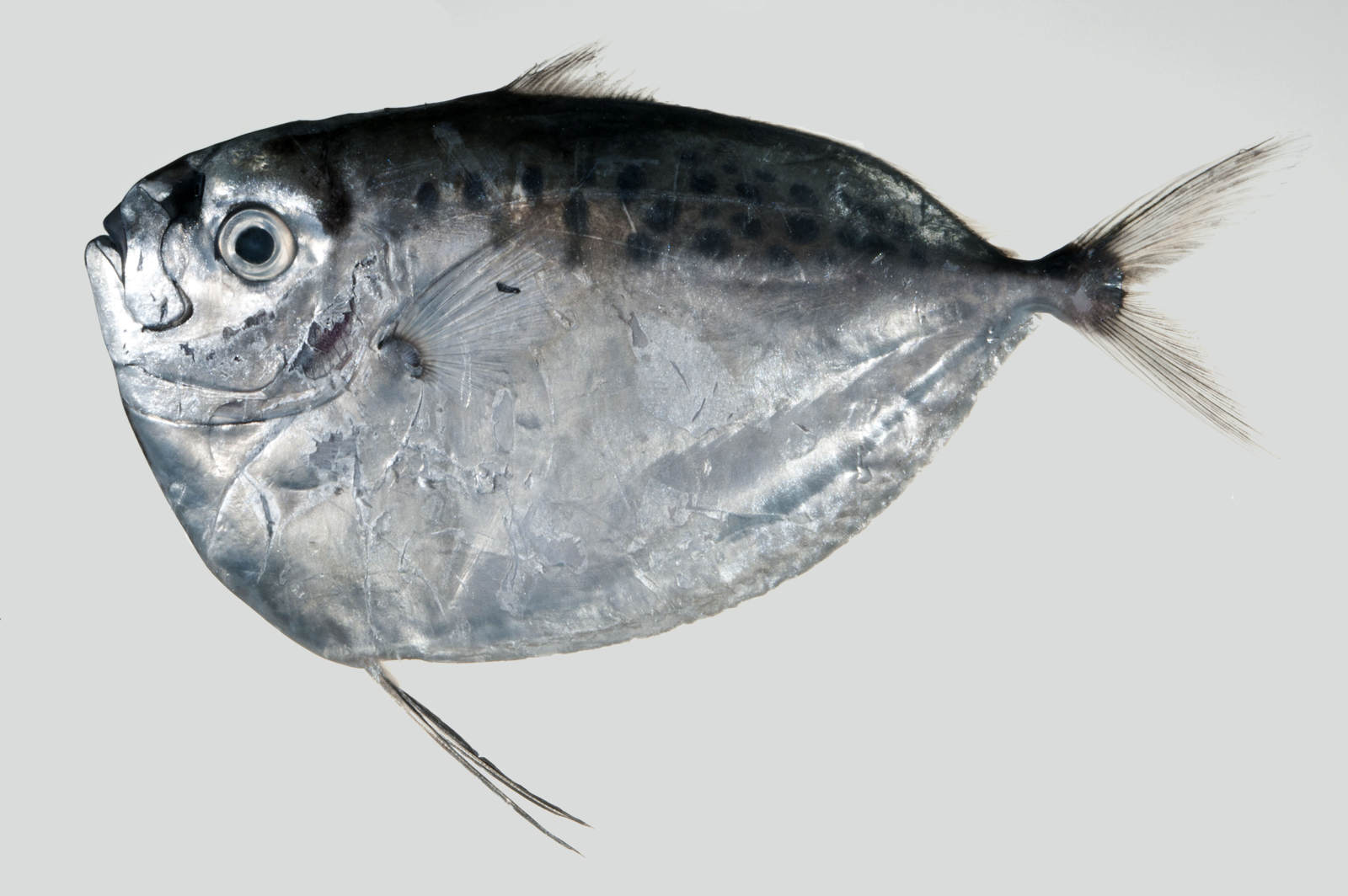
Menidae: Moonfish
There is one species, Mene maculata. This fish is interestingly shaped, being laterally compressed with a nearly flat dorsal surface and a deeply keeled ventral surface. It has no spines in its long dorsal and anal fins, and it has elongated pelvic fins.

D.G.R. Wiadnya / CC BY (https://creativecommons.org/licenses/by/4.0)
Leiognathidae: Ponyfishes, Slimys, Slipmouths
This family gets the name "Slimys" from the copious amounts of mucus they produce. Other interesting features include a highly protractile jaw, a locking mechanism in the dorsal and anal fins to keep the spines upright, and the presence of luminous organs in the throat, which are able to shine through the underside.

Bramidae: Pomfrets
This family of fishes has a similar body form to jacks or dolphinfishes, depending on the genus. Their most exciitng feature is a long dorsal fin that extends the length of the dorsal surface.
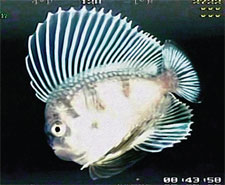
Caristiidae: Manefishes
This family is known for their affection for siphonophores, which they dine on incessantly. They have large eyes and long pelvic fins. They get their name from their long dorsal fin which originates on the head.
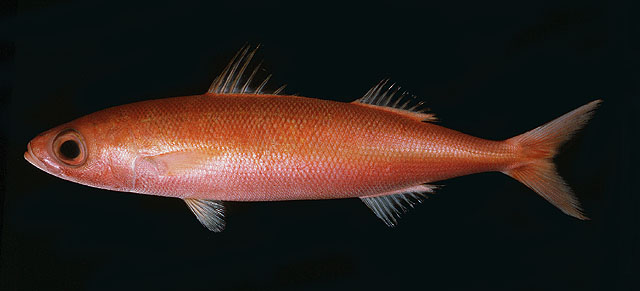
Emmelichthyidae: Rovers
In this family, some of the species have their two dorsal fins connected, some do not. It has caused great rifts at their family reunions.
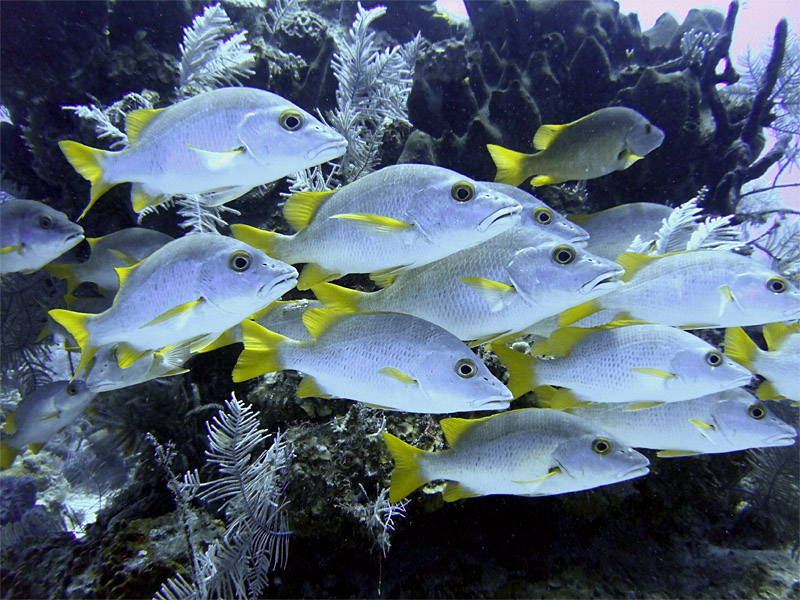
Lutjanidae: Snappers
This large family is characterized by fishes with enlarged canines, giving them a scarier appearance than your average fish. Honestly, although they are well-known food fishes, they aren't an extremely exciting group. They are known for causing ciguatera poisoning, most likely due to being high on the food chain and concentrating poisons in their tissues. Ciguatera poisoning, for those of you that are curious, is a toxin originating from dinoflagellates, and cannot be detected in fish before its eaten. It is also unpredictable, and can cause anywhere from mild to severe symptoms depending on the incident.
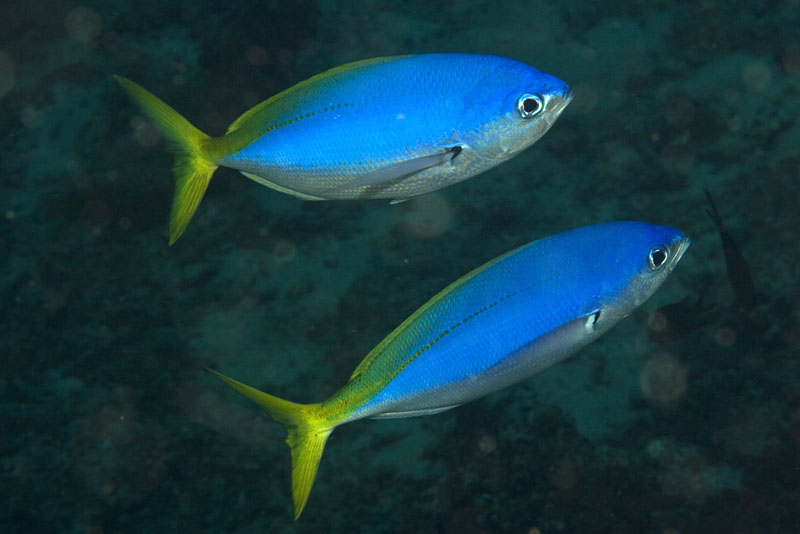
Caesionidae: Fusiliers
These guys are related to snappers, but instead of being carnivorous, they feed on plankton. Isn't that nice?
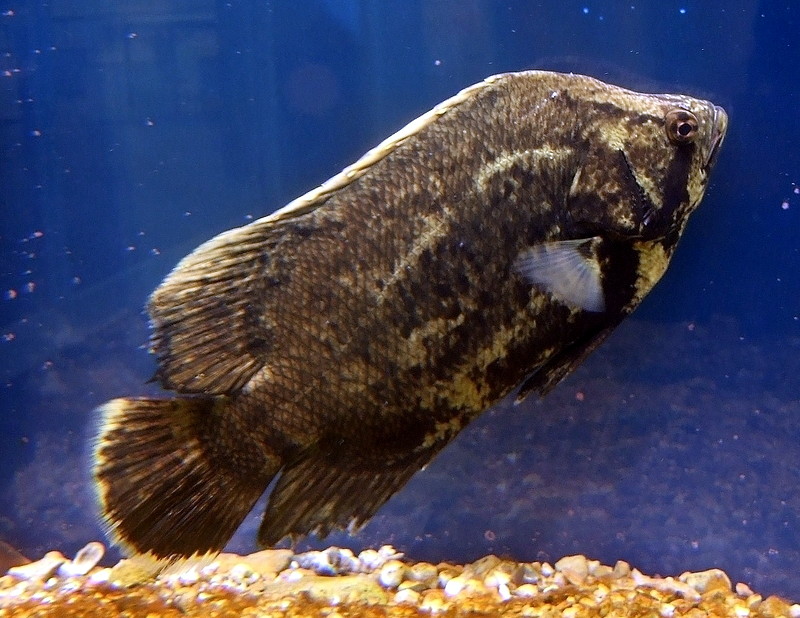
Lobotidae: Tripletails
There is only one genus, Lobotes, with two species. Do they actually have three tails? Nope. But they like to trick people into thinking they do, because the second dorsal and anal fins are rounded like the tail, so it's like the fish has three tails! The juveniles are even trickier, and often float near the surface, pretending that they're leaves! Tricky fishes!
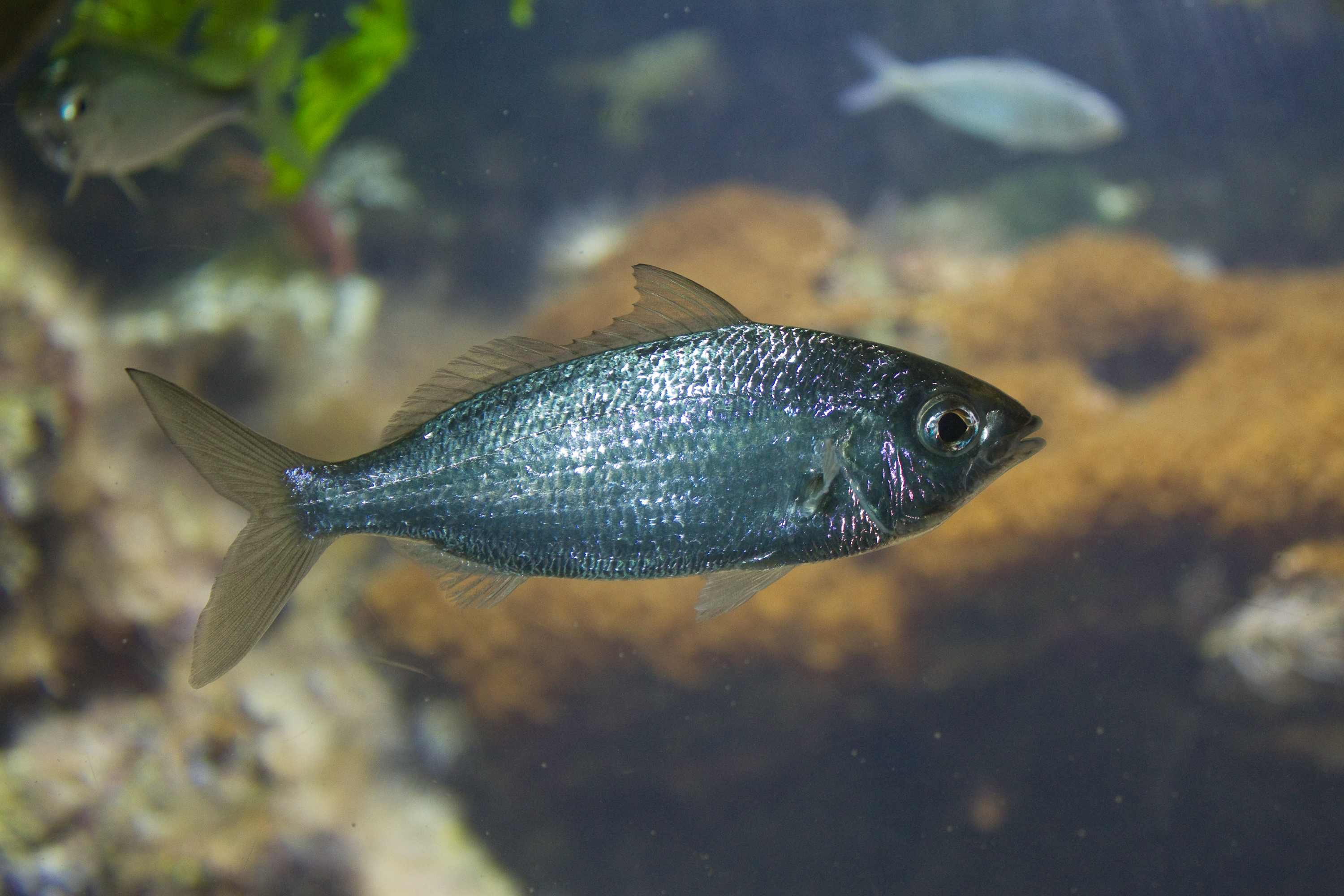
Gerreidae: Mojarras
These fishes have highly protractile mouths! I'm not sure what a Mojarra is, but it sounds pretty cool...like the name of an epic spaceship in a sci-fi movie.
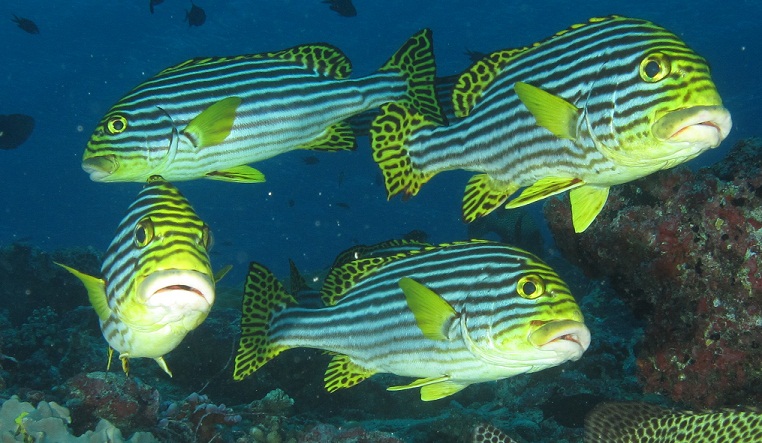
Haemulidae: Grunts
These fishes get their delightful name from their delightful habit of grinding their teeth, especially when caught by fishermen. Maybe they should see an orthodontist about that problem? This family includes the French Grunt (Haemulon flavolineatum), which are familiar to snorkelers, along with the Porkfish (Anisotremus virginicus). There are also numerous brightly colored fishes, known as "sweetlips."
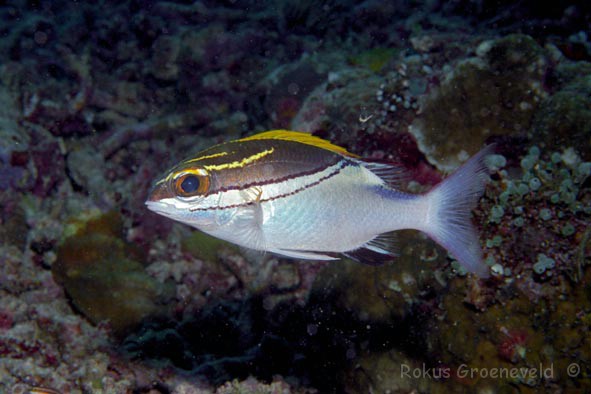
Nemipteridae: Threadfin Breams
This family of fishes is a group of generic percoids with not too many distinguishing characteristics. Their common name comes from some of the species, which have a long filamentous upper lobe of the caudal fin. This family includes Scolopsis bilineata, the Two-Lined Monocle Bream, which is kind of a cool name for a fish.
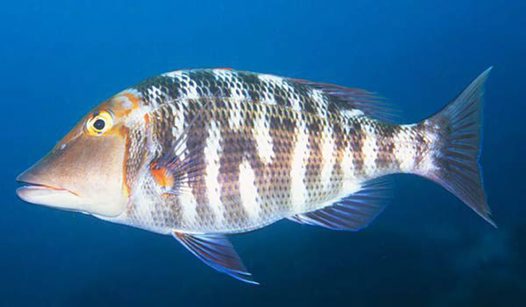
Lethrinidae: Emperors, Emperor Breams
Another not-too-descript family, these fishes are closely related to Nemipterids, grouped based on the lack of interesting characters. One seemingly important fact (as Nelson and Fishbase feel the need to mention it) is that there is only one species found in the Atlantic, Lethrinus atlanticus. Some species have the ability to change from female to male.
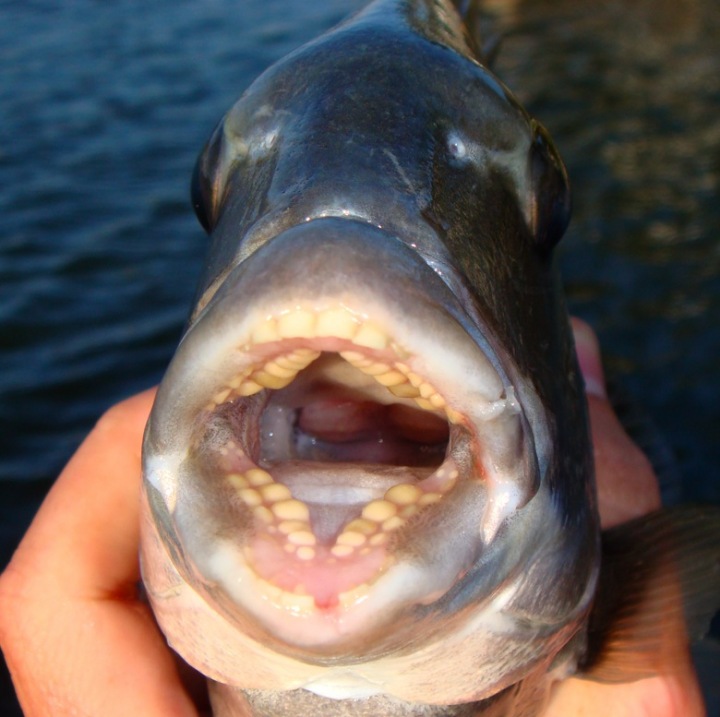
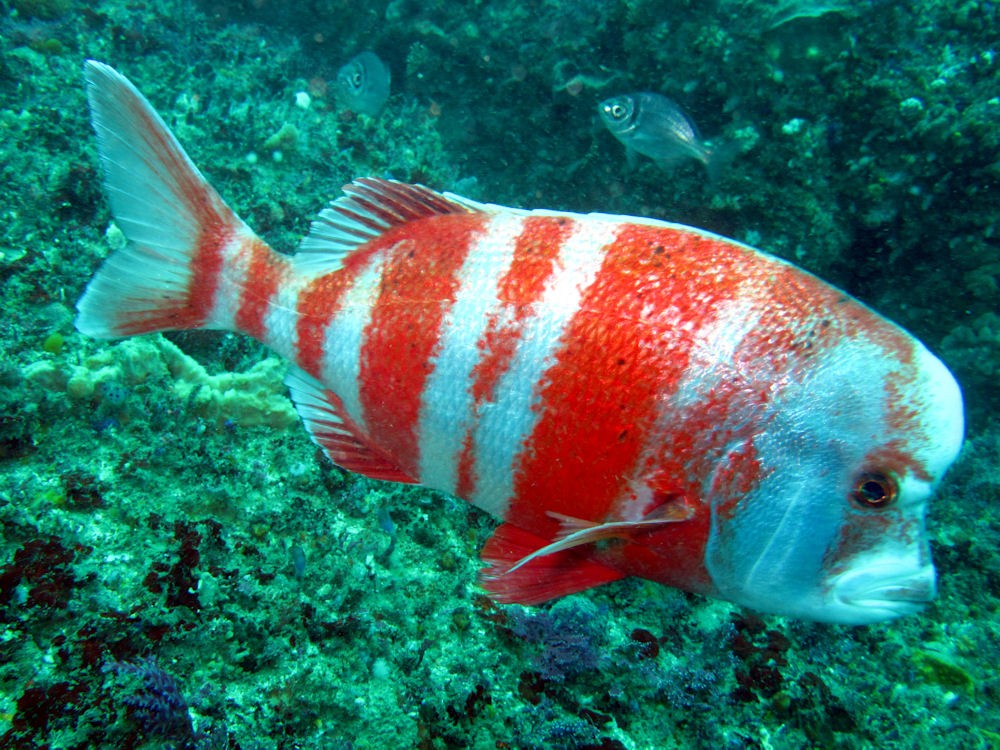
Sparidae: Porgies
Yet again, another family lacking defining characters...unless you count ridiculous names as a character! Let's take a look:
- Sheepshead (Archosargus probatocephalus): I'm no sheep expert, but this fish does not have a head like a sheep. But by golly, does it have some creepy teeth.
- Frying-Pan Snapper (Argyrops spinifer): This fish is great when you have no other cookware, plus, you can use it to cook...
- Butterfish (Lagodon rhomboides): Keep your eyes peeled in groceries stores for the new product, "I Can't Believe It's Not Butterfish."
- Salema Porgy (Sarpa salpa, not Salpa sarpa): Interestingly, this fish is rumored to cause hallucinations when eaten, although it is frequently served in Mediterranean restaurants with no reported ill effects.
- Red Sheepshead (Chrysoblephus gibbiceps): It has a giant head. What else can I say?
- Bogue (Boops boops): One of my all-time favorite names! Boops supposedly means "cow-eye" in Greek, and this fish is named for its large eyes. But it's still a hilarious name.
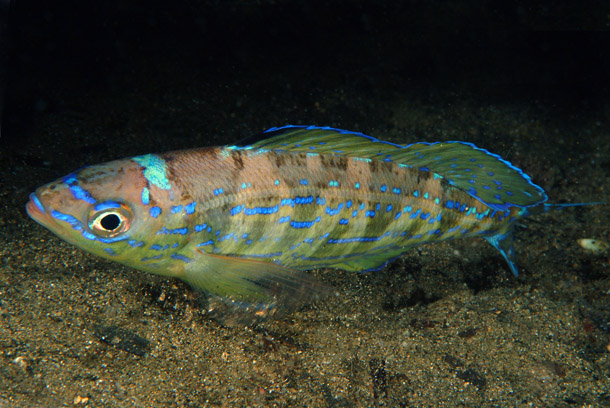
Etrusko25 / Public domain
Centracanthidae: Picarel Porgies
This family is notable for its extremely protractile upper jaw. Fascinating.
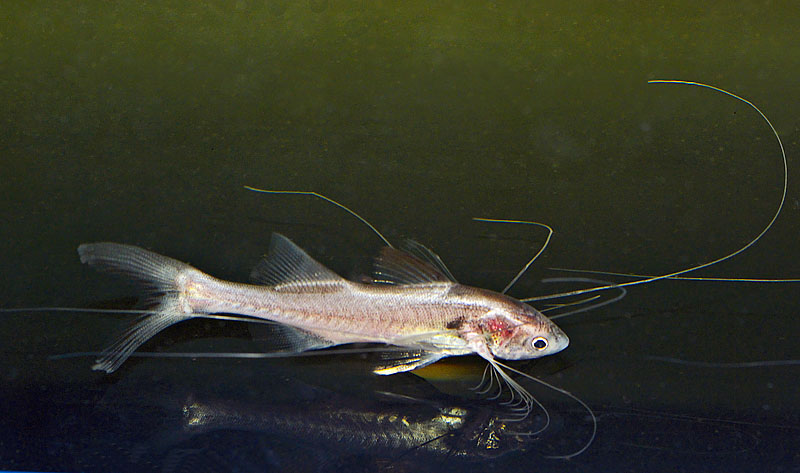
Polynemidae: Threadfins
These fishes get their name from their distinctive pectoral fins. The fins are separated into two sections, with the upper section looking like a normal fin. However, the lower section is made up of about 7 elongated rays which are entirely separate from each other.

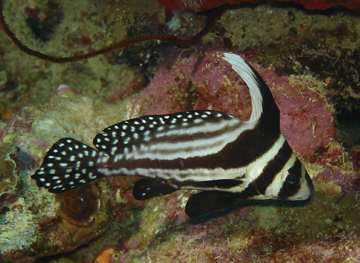
Sciaenidae: Drums
This is a huge family, including over 250 species, which come in different shapes and sizes. Drums get their name from their elaborate swimbladders, which they use to produce sounds by vibrating the swimbladders with the surrounding muscles. They also have large otoliths (ear bones), most likely to hear the drumming of other members of their species. Some species have barbels on the chin, and many species often have conspicuous pores around the nose and mouth. Some notable members:
- Weakfish (Cynoscion regalis): I just love that name. He's the fish they always pick last for the undersea basketball teams. The name actually comes from the weakness of the mouth muscles, allowing the fish to pull away from a hook and swim free.
- Spotted Drum (Equetus punctatus): This fish is extremely recognizable by its enlarged, curved dorsal fin and the black/white stripes on its body. It is a close relative of the Jack-knifefish, Equetus lanceolatus.
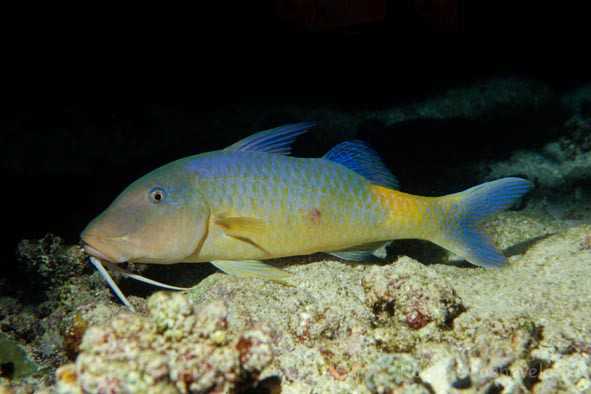
Mullidae: Goatfishes
Goatfishes have a pair of barbels on their chins, which they use for finding food. Just like goats, they are not picky eaters, and will eat whatever they can find on the seafloor. Goatfishes are known to be able to change colors.
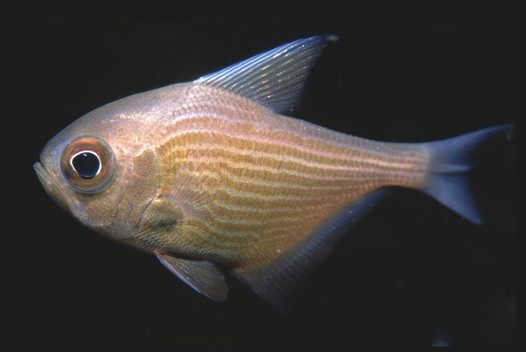
Pempheridae: Sweepers
Sweepers have very large eyes, and a flattened body that is deepened ventrally, similar to a hatchetfish. They also have a small dorsal fin near the head. They are nocturnal, which explains the large eyes (the better to see you with, my dear!)
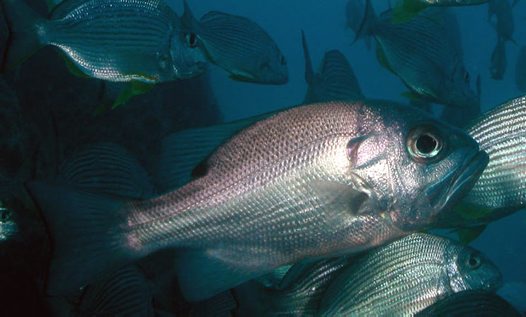
Glaucosomatidae: Pearl Perches
There is one genus, Glaucosoma, which is not to be confused with the disease Glaucoma. They are closely related to sweepers, and that's all I have for you.
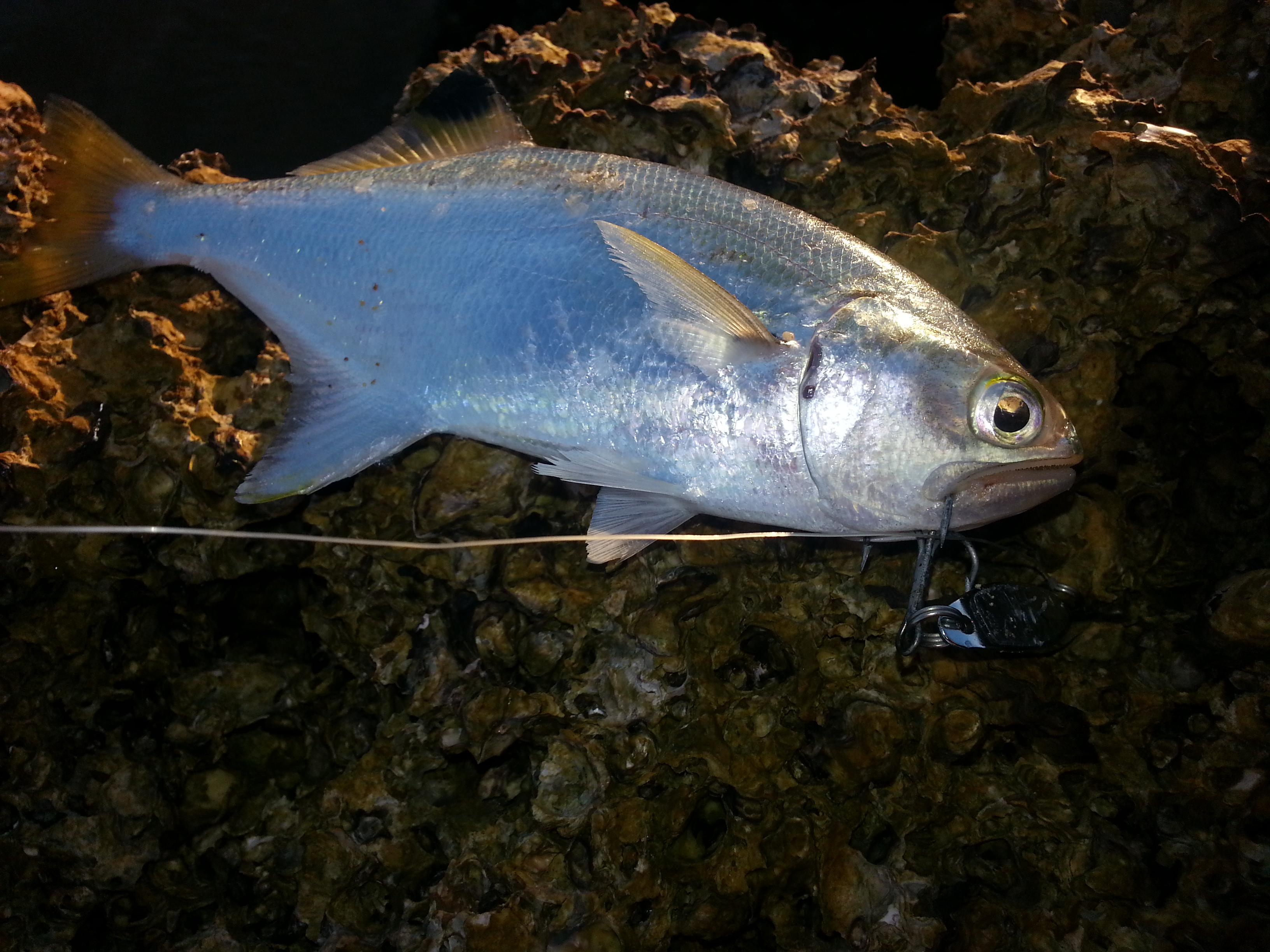
Leptobramidae: Beachsalmon
There is one species of beachsalmon, Leptobrama muelleri. It has a fusiform shape, and is laterally compressed. The mouth extends past the smallish eye, and the dorsal/anal fins are located midway on the body.
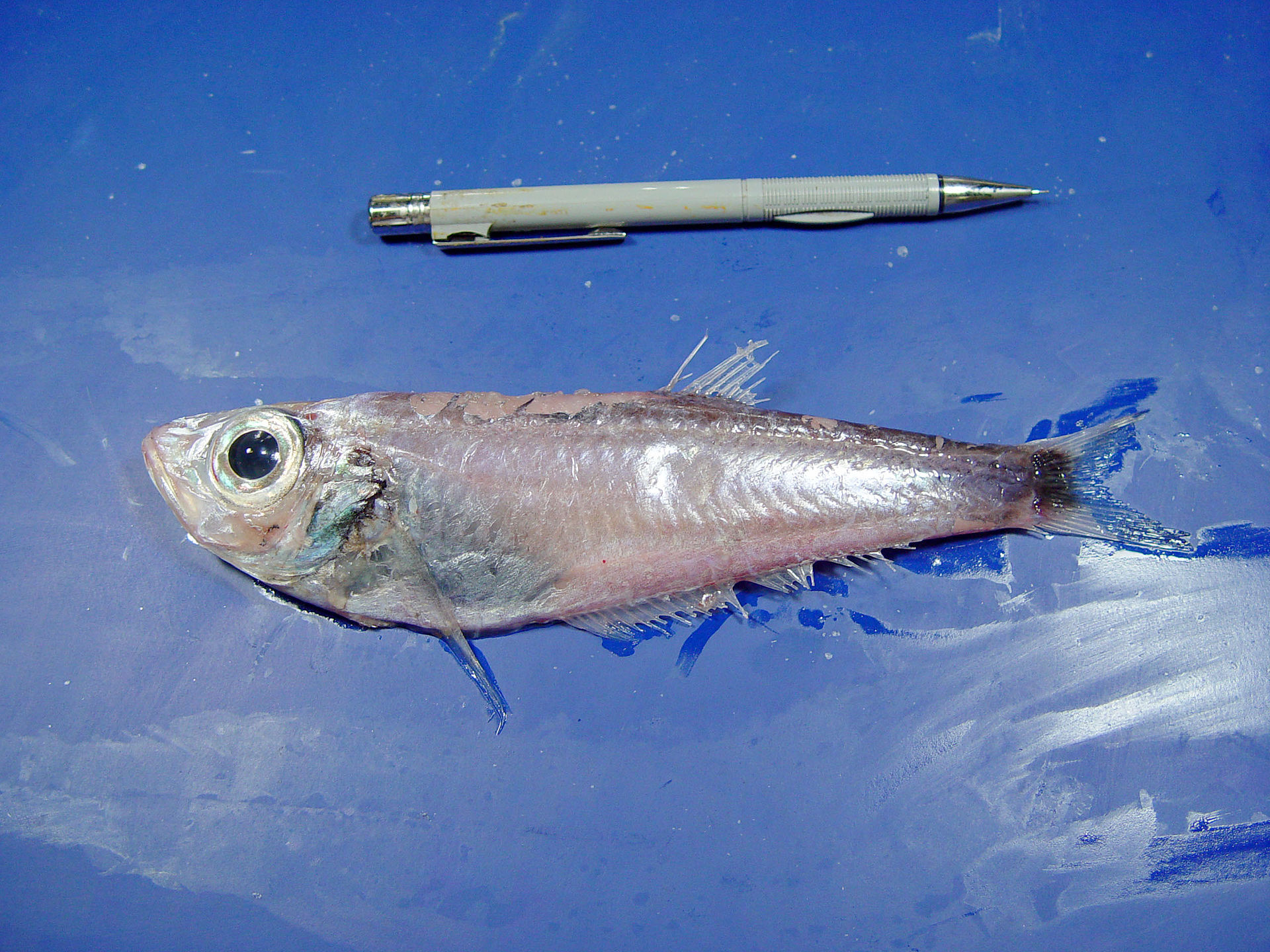
SEFSC Pascagoula Laboratory; Collection of Brandi Noble, NOAA/NMFS/SEFSC NOAA Photo Library / Public domain
Bathyclupeidae: Bathyclupeids
This deepsea family has one genus, Bathyclupea, with five species. They can be recognized by the presence of a short spineless dorsal fin about halfway on the dorsal surface. Apparently these fishes are slightly larger than a standard mechanical pencil.
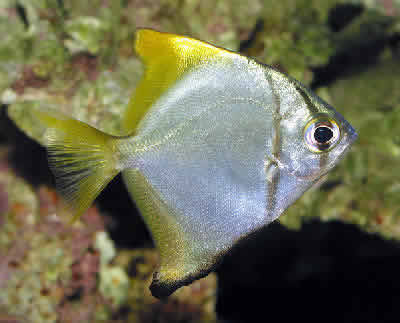
Monodactylidae: Moonyfishes
These fishes have very deep bodies, and can be taller than they are long. The adults lack pelvic fins, although the juveniles may have them.
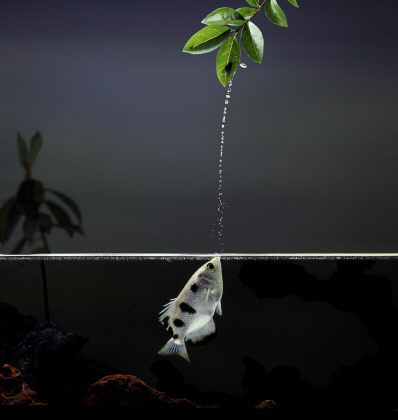
Toxotidae: Archerfishes
There is only one genus, Toxotes, and boy is it an awesome one! Archerfishes get their name from their ability to forcibly squirt water from their mouths, to accurately hit insects sitting on foliage above the water. They are extremely accurate, and almost always hit their prey on the first try. Check out a video here. They are laterally compressed, with a deep body, large eyes, and a jutting lower jaw.
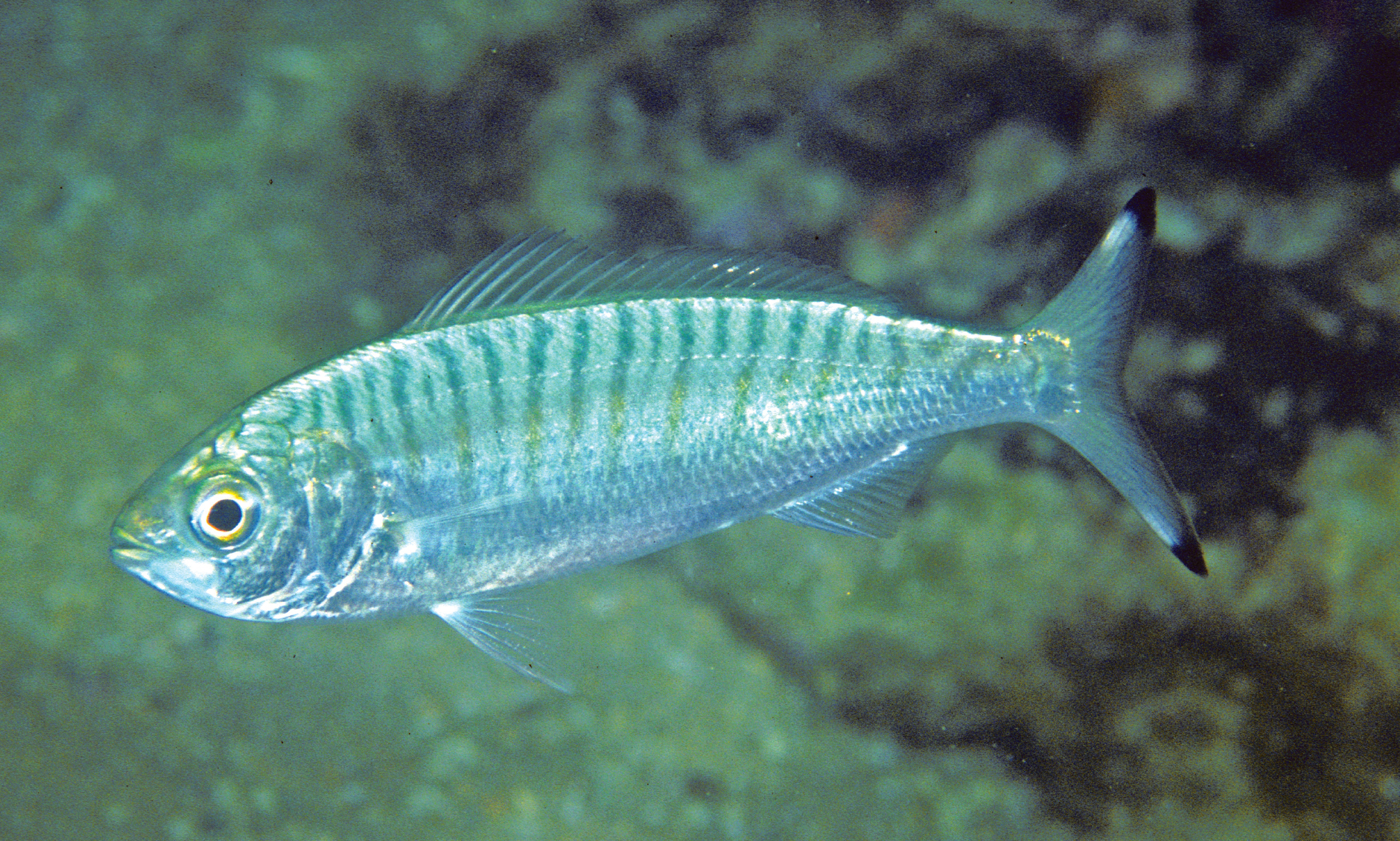
Arripidae: Australasian Salmon
There is one genus, Arripis. This family was named by European explorers when they came to Australia based on a similar appearance to salmon, but they are obviously not related (based on their placement on this website). They can be identified as not-salmon by the forward placement of the pelvic fins, along with the spiny dorsal fin, which stretches the length of the dorsal surface.
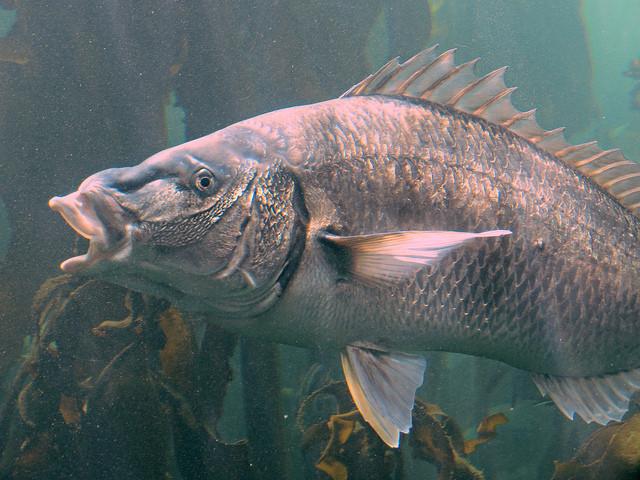
Dichistiidae: Galjoen Fishes
There is one genus, Dichistius, with two species. It looks similar to the Centrarchid body type, but it is not a Centrarchid! So remember that. They have a large maxilla, which kind of makes their mouths look goofy.
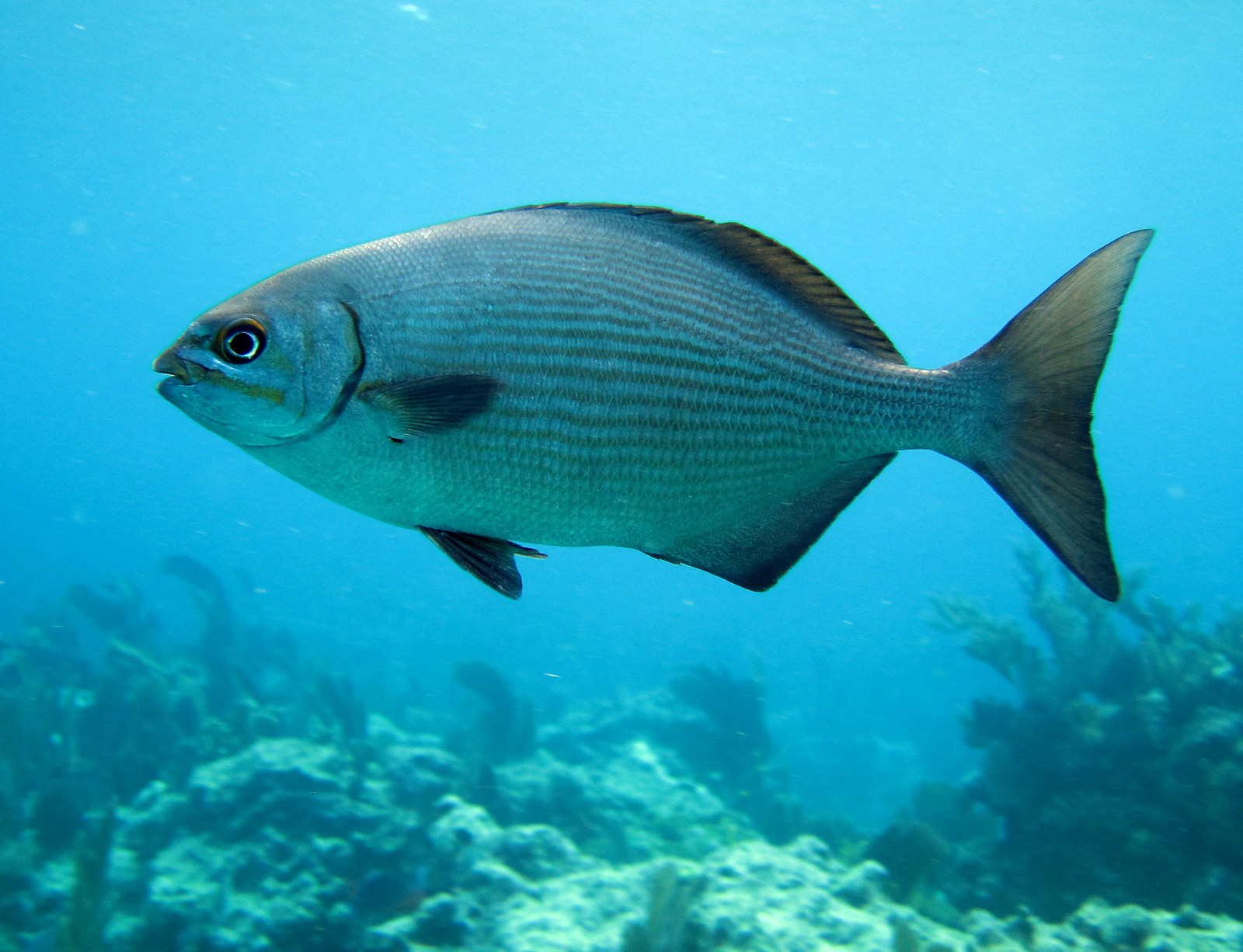
Kyphosidae: Sea Chubs
Sea chubs are super goofy! I've seen them whie snorkeling and scuba diving, and they like to swim nearby in large schools. They just have a goofy look about them, as if they're not really sure what's going on. They usually have a roundish body when viewed from the side, and have a dorsal fin that stretches the length of the back.
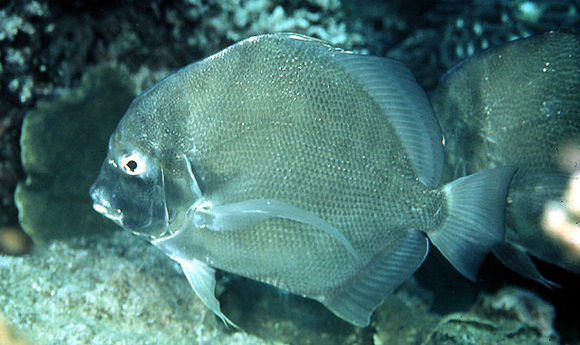
Drepaneidae: Sicklefishes
What does the Grim Reaper order at a seafood restaurant? SICKLEFISH! Sometimes I just crack myself up. There is one genus, Drepane, with two species. These fishes have a deep body with a pointed back, and they have extremely long pectoral fins.
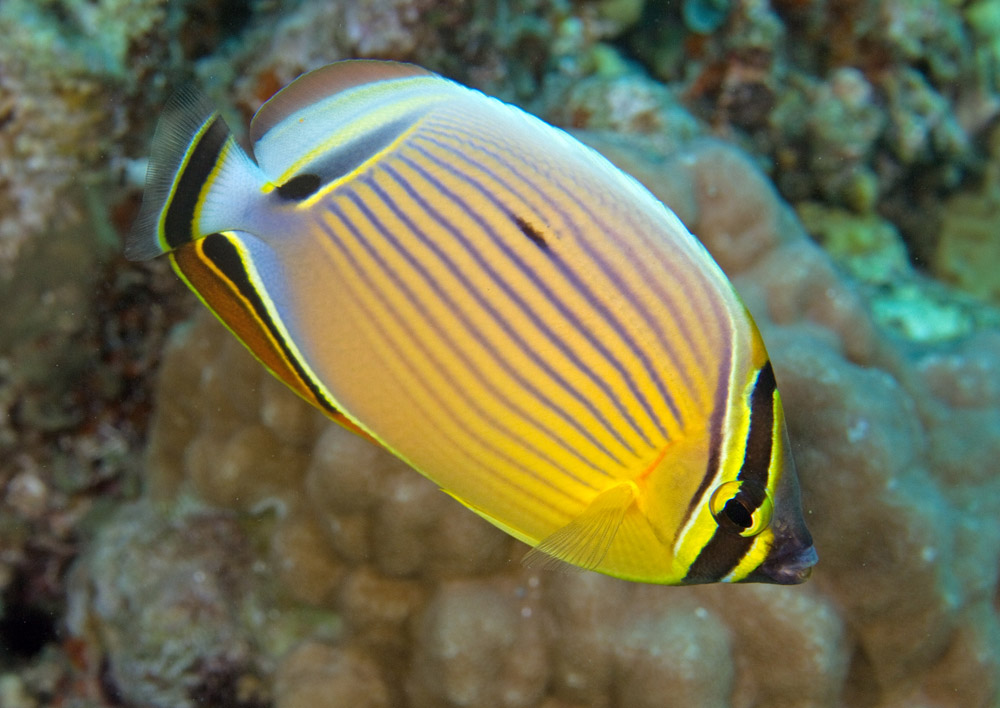
Chaetodontidae: Butterflyfishes
This family is full of brightly colored fishes! Once thought to be related to Angelfishes (see below), they were finally separated into different families. Many species have eye spots on the posterior region to confuse predators. Internally, the swimbladder has two anterior processes, possibly to amplify sound towards the inner ear.

Stan Shebs / CC BY-SA (https://creativecommons.org/licenses/by-sa/3.0)
Pomacanthidae: Angelfishes
You may be asking after the previous entry, "But Nate, what's the difference between angel- and butterfly-fishes?" Well, I was saving it for this entry! Angelfishes are easily identifiable by a sharp spine on their operculum (bony gill covering). That's how you know! They are also brightly colored, although do not usually have eyespots.
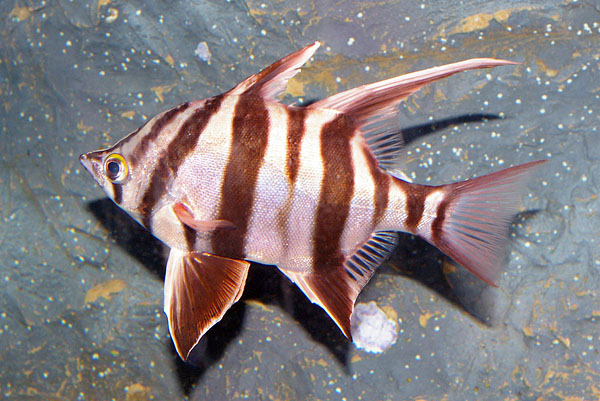
Enoplosidae: Oldwife
There is one species, Enoplosus armatus. They may look like butterflyfishes, but they are not! They can be distinguished by extremely large pelvic fins, each containing a spine. There are also two large dorsal fins with spines, which some say can inflict a venomous wound. In addition, there is, not one, but TWO opercular spines (smaller than in angelfishes).
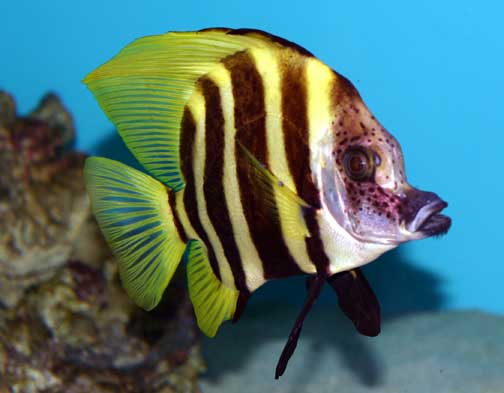
Pentacerotidae: Armorheads
Based on the name, I'm going to guess they have armored heads...which they do! The head region is covered by exposed bone. The dorsal fin has large spines in the anterior portion.
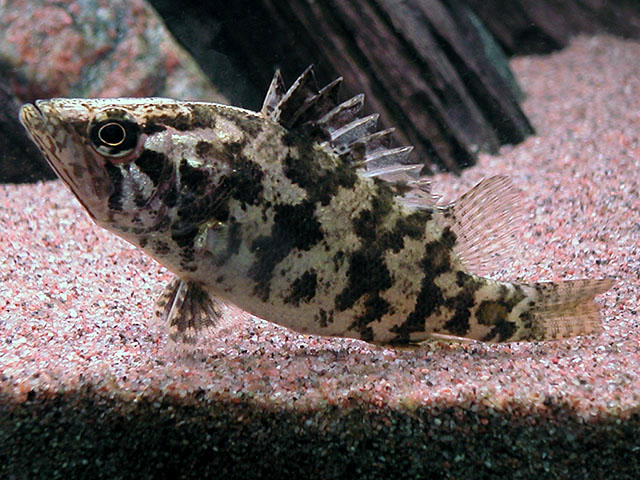
Nandidae: Asian Leaffishes
These fishes like to float along, pretending they're leaves. This way, using their large mouths, they can ambush large prey. They have a continuous dorsal fin, and a spiny anal fin.

Polycentridae: Afro-American Leaffishes
These should actually be called "South American Leaffishes," as it seems the families have been revised since Nelson 2006 was published. There are two monotypic genera, and they are both only found in South America. They are similar in description to Nandidae.
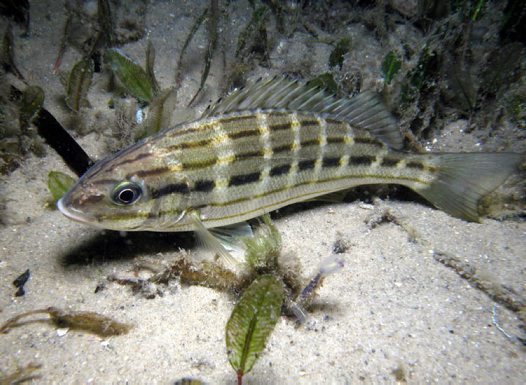
Terapontidae: Grunters, Tigerperches
This family has spiny fins all over, with the dorsal, anal, and pelvic fins containing spines. The tigerperches also have an interesting swimbladder situation, with it being transversely divided and having unique strumming muscles.

Yuichi Kano, FiMSeA / http://ffish.asia. / CC BY (https://creativecommons.org/licenses/by/3.0)
Kuhliidae: Flagtails
There is only one genus, Kuhlia. The genus is distinguished by fin sheathes for the dorsal and anal fins, which protect the fins when they are not erect.

Oplegnathidae: Knifejaws
There is one genus, Oplegnathus. The adults of this family have a fused beak, similar to parrotfishes.
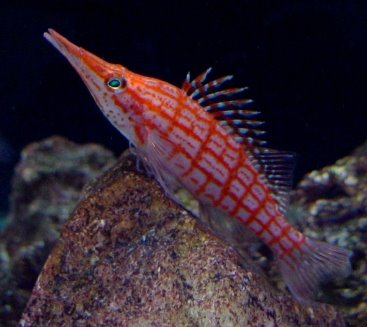
Cirrhitidae: Hawkfishes
This family has spiny dorsal fins, with each spine tipped with filaments ("Cirrh-"" is greek for fringe). They do look similar to scorpionfishes, although they are not closely related. They often perch in fire coral for protection from predators.

Chironemidae: Kelpfishes
There's not much to say about this family. They look similar to hawkfishes, but kind of have a lumpy head. And maybe they like kelp. Or eat kelp. Or live in kelp. I don't know.
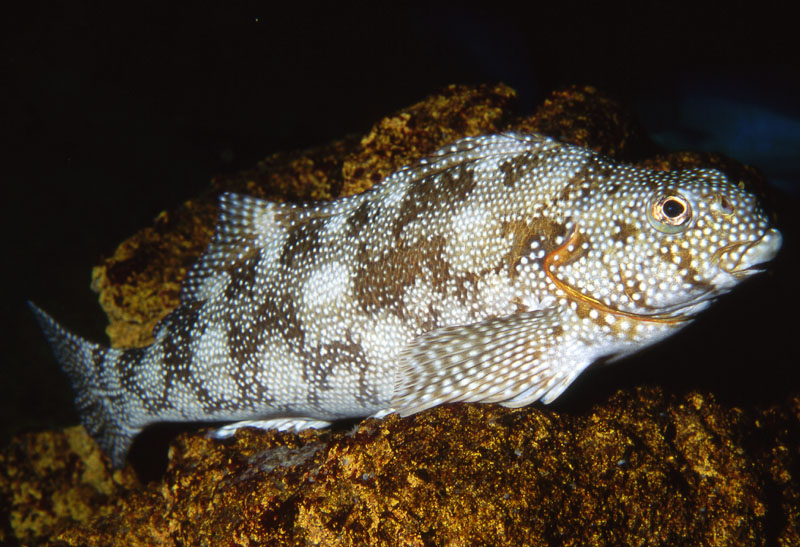
Aplodactylidae: Marblefishes
There is only one genus, Aplodactylus. Their scientific name means "single finger," because of the simple shape of their pectoral fins.
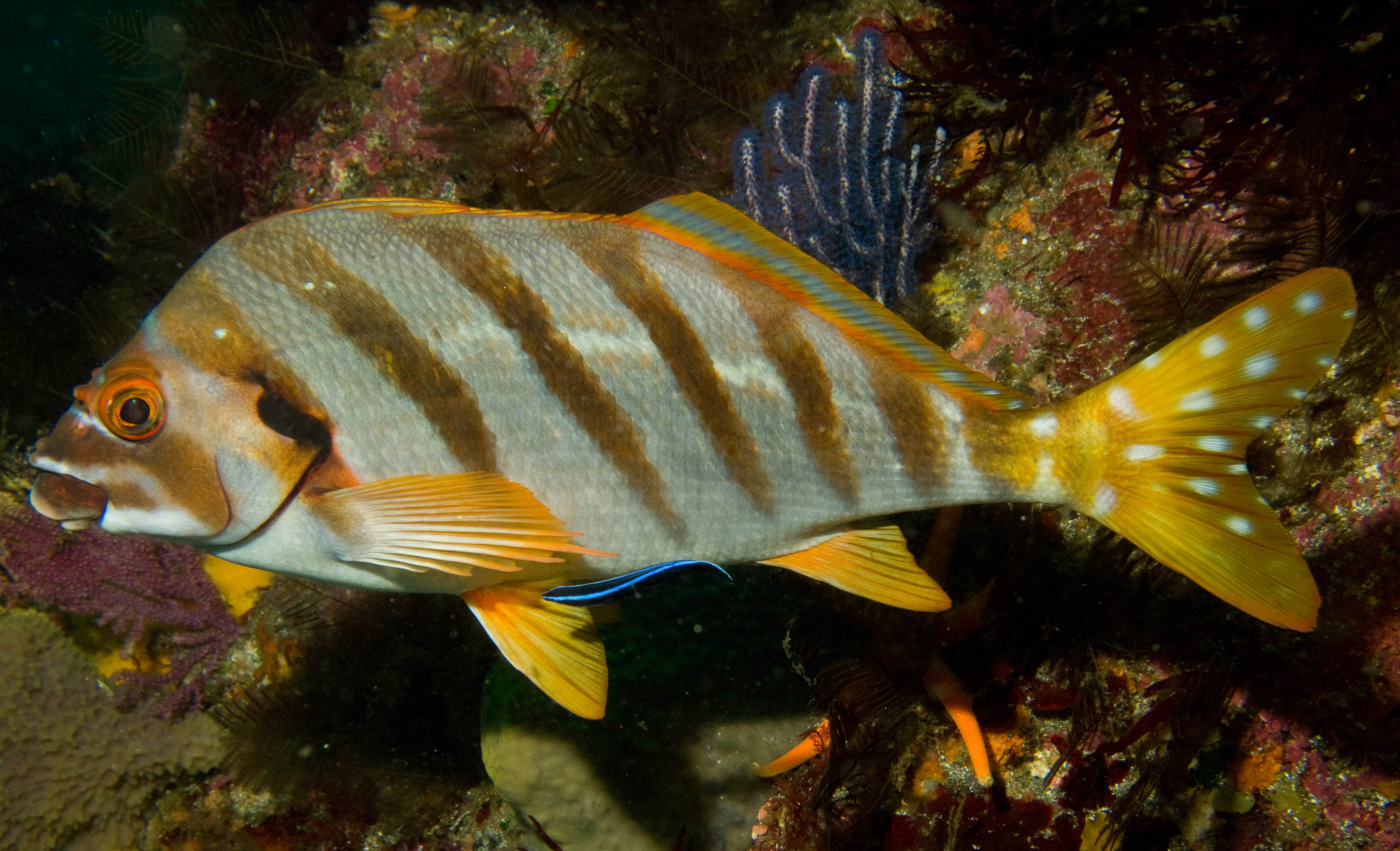
Cheilodactylidae: Morwongs
These fishes have long dorsal fins with many spines, and big lips. I have no idea what a morwong is, but it sounds like an ancient form of martial arts.
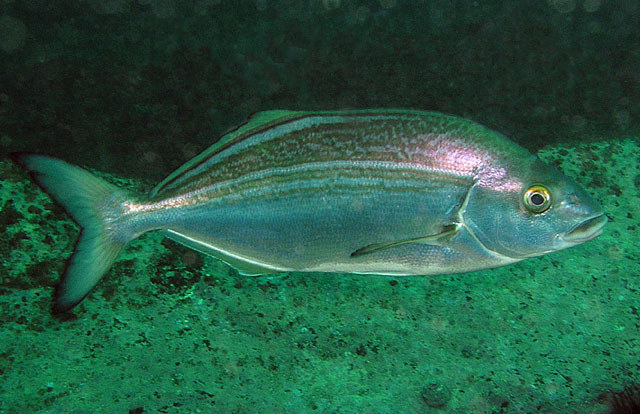
Latridae: Trumpeters
This family has a long dorsal fin, almost divided between the spiny and soft regions. Supposedly they are good sport fishes. They are similar to Cheilodactylids.
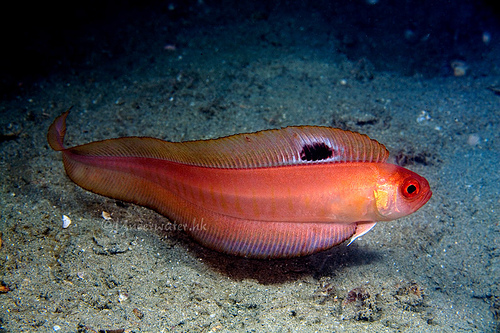
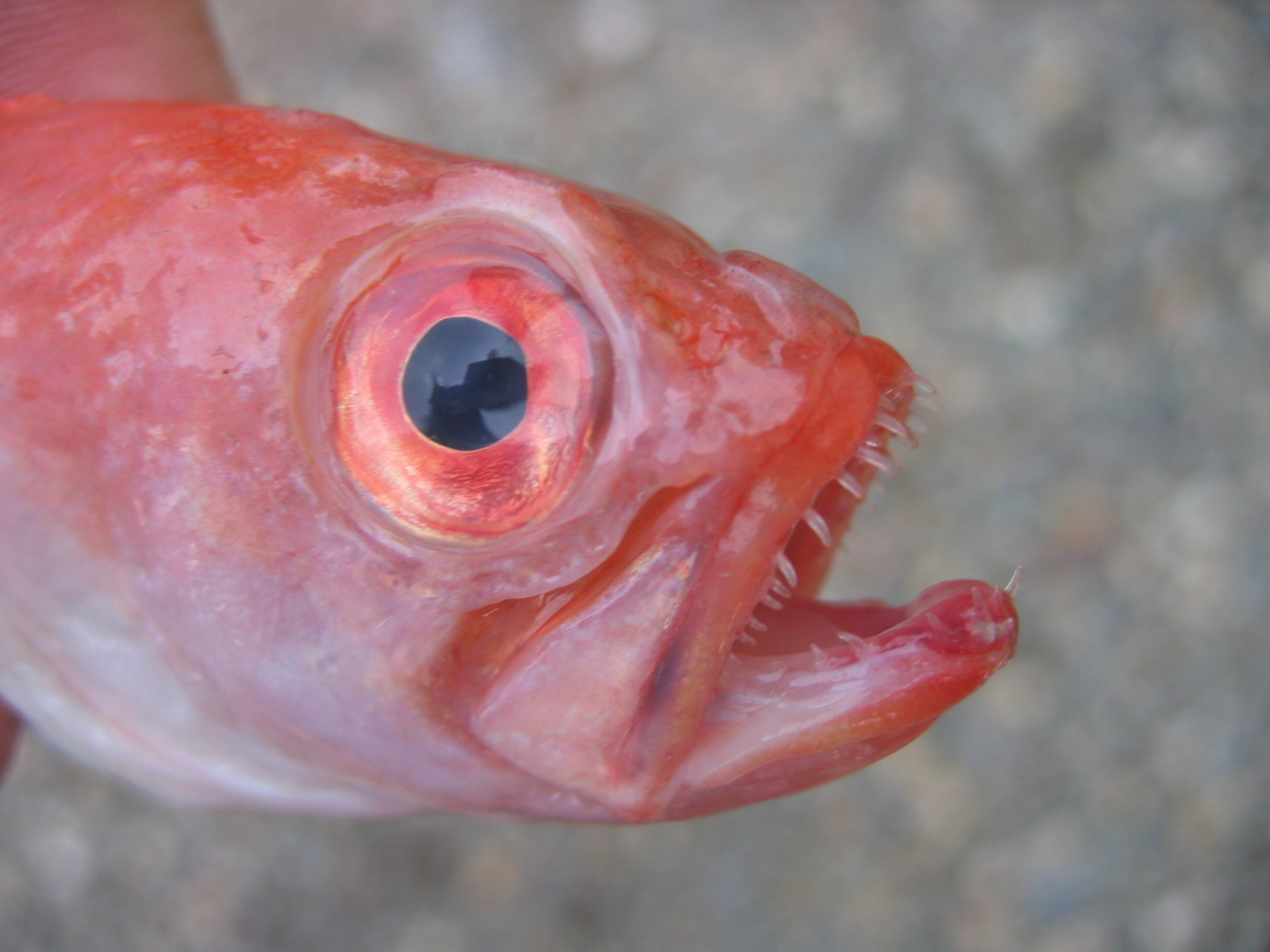
Cepolidae: Bandfishes
This family is a little different than other Percoids. The dorsal fin extends almost the entire length of the body, and the lateral line runs near the base of this fin. Many species have a dorsal fin that connects to the caudal and anal fin, similar to that of an eel.